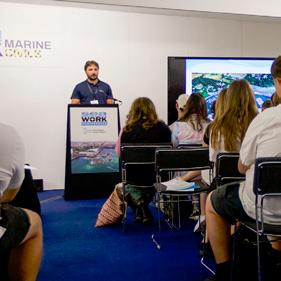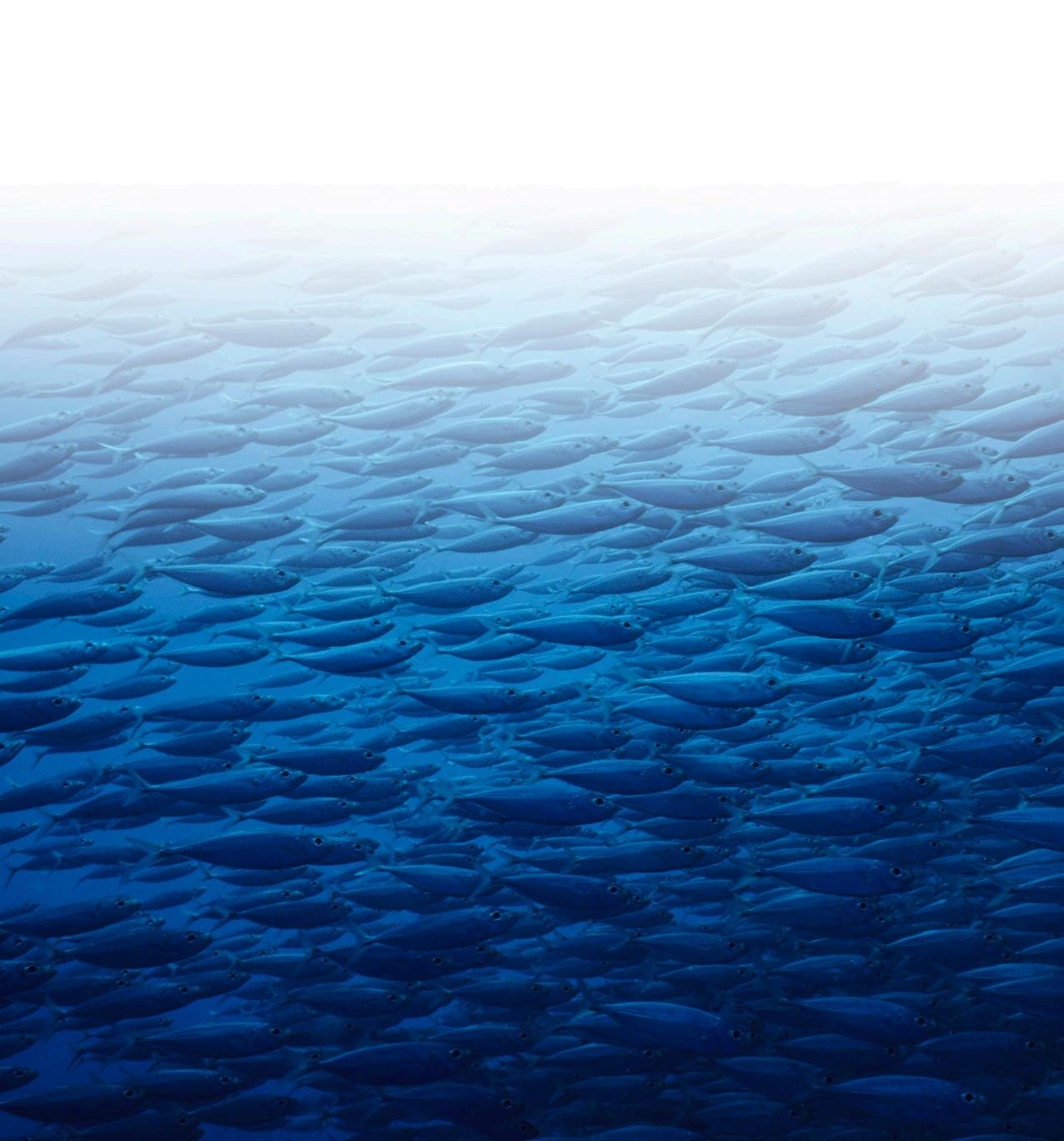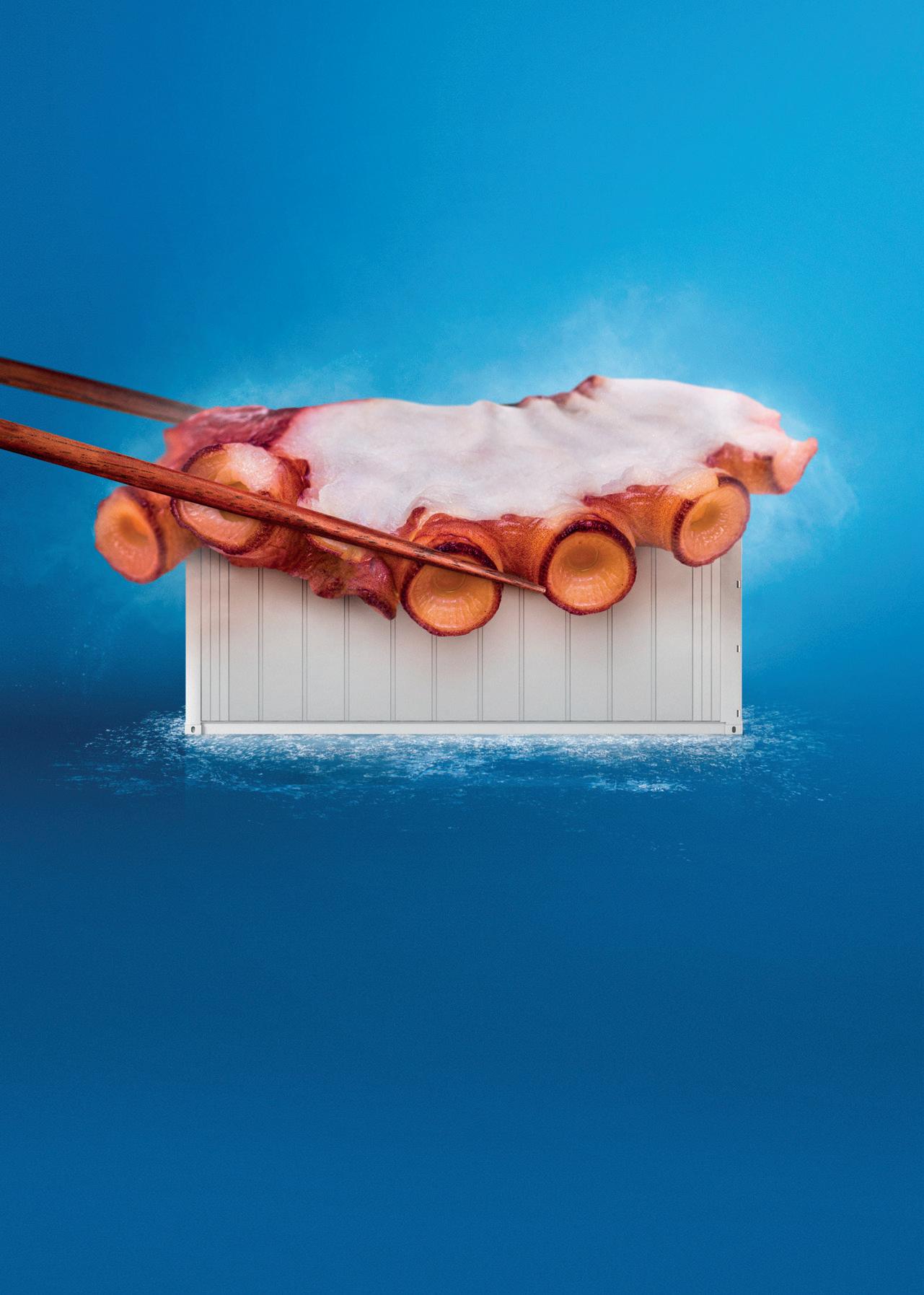


























Deepwater fishing company Sealord has entered into an agreement to acquire privately-owned Independent Fisheries, with the deal hailed as the largest financial transaction in New Zealand’s seafood sector since the Sealord deal in 1992 that was part of the Māori Treaty Settlement. The transaction will make Sealord the country’s biggest seafood business.
Deepwater fishing company Sealord has entered into an agreement to acquire privatelyowned Independent Fisheries, with the deal hailed as the largest financial transaction in New Zealand’s seafood sector since the Sealord deal in 1992 that was part of the Māori Treaty Settlement. The transaction will make Sealord the country’s biggest seafood business.

Subject to satisfying a number of conditions, from the Commerce from the Overseas will acquire the Independent Fisheries approximately 46,000 owned and one chartered vessels, 500 plus vessel storage facility. be dependent on when approvals are met.
Paulin said ownership of an “incredibly unique” of this type and quality
n Upon completion of the deal, Independent Fisheries will continue to be operated by its current employees within the Sealord Group
rarely come along in deepwater fishing.
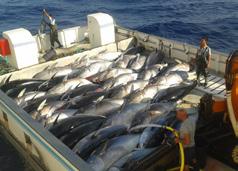
“The business is an excellent fit for Sealord both operationally and culturally. Independent Fisheries has a strong family-based culture built over many years by the late Charles Shadbolt, who had a passion for looking after his people and the wider community, and I am confident that Sealord can continue this proud tradition. We look forward to welcoming Independent Fisheries employees to the Sealord whānau,” he said.
Since being founded as a small fish and chip shop in 1956, Independent Fisheries has grown into one of New Zealand’s major privatelyowned fishing businesses, with the fourth largest deepwater quota package in New Zealand.

More than 20 shrimp producers have held talks aimed at creating a Global Shrimp Council, with the general mandate to promote and grow shrimp consumption around the world by providing meaningful information about on the fringes of the annual Global Shrimp Forum (GSF), held in Utrecht 5-7 September 2023, with producers from several countries including Ecuador, Mexico, India, Vietnam and Indonesia taking part.
There was broad agreement of a need to establish a global body to promote shrimp consumption across international markets, to benefit the whole industry.
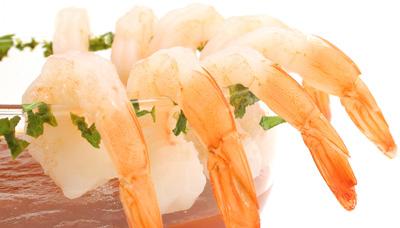
A follow-up meeting will be organised before the end of this year, with the aim of establishing the council in 2024.
vanbeelengroup.nl

NEW HORIZONS
Tuna side-streams for a circular industry page 18
New-generation Altaire joins Shetland fleet page 22

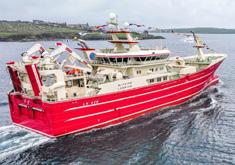
AQUACULTURE

Transforming blue food through connectivity page 30

‘we make what works for you’

With top-level negotiations on the sharing arrangements for the hugely important and valuable pelagic stocks in the Northeast Atlantic expected to soon resume, calls for the region’s coastal states to prioritise delivering an agreement on mackerel were cranking up as the final few pages of this issue of WF were being put together. To-date, most of this noise has been coming from EU fishing leaders and members of international supply chains. Above all else, these stakeholders want an accord that sees total fishing effort brought into line with scientific advice and which encompasses all parties.

By comparison, those on the decision-making side have been rather silent. In this regard, a commonly-held opinion is that, with the exception of the EU, the other five coastal states – Norway, the Faroe Islands, Greenland, Iceland and the United Kingdom –have overly-focused on their own interests in recent times, setting unilateral or occasionally bilateral quotas and using divisive systems such as the zonal attachment concept to justify their fishing efforts –effort that’s seen the overall stock heavily overfished.
While reaching consensus and delivering sustainably-managed Northeast Atlantic pelagic fisheries isn’t going to be easily achieved, it’s absolutely not impossible. Indeed, these same parties all have a history of reaching bilateral, trilateral, and multilateral agreements. They were also fairly close as recently as this spring, but unfortunately the hard deadline of 31 March set by the six coastal states passed without a firm agreement on the sharing of the stock.
So along with having reason for hope this autumn, it’s also clear there needs to be a doubling up of efforts at all stakeholder levels. At the negotiating table, coastal states must endeavour to rebuild trust and truly champion the sustainable management of resources. Within markets, there needs to be even stronger rally calls and sourcing ultimatums. Of equal importance, consumers have to be brought more into the picture – made better aware of the current situation and its potential long-term effects so they can make informed purchasing decisions.
The international fishing & aquaculture industry magazine
EDITORIAL & CONTENT
Editor: Jason Holland jholland@worldfishing.net
News Reporter: Rebecca Strong rstrong@mercatormedia.com
Regular Correspondents: Please contact our Correspondents at editor@worldfishing.net
Tim Oliver, Bonnie Waycott, Vladislav Vorotnikov Quentin Bates, Terje Engø Eduardo Campos Lima, Eugene Gerden
Production
David Blake, Paul Dunnington production@mercatormedia.com
SALES & MARKETING t +44 1329 825335 f +44 1329 550192
Media Sales Manager: Hannah Bolland hbolland@worldfishing.net
Marketing marketing@mercatormedia.com
EXECUTIVE Events Director:
Marianne Rasmussen-Coulling
Chief Executive: Andrew Webster awebster@mercatormedia.com
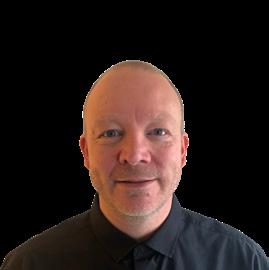
WF magazine is published monthly by Mercator Media Limited, Spinnaker House, Waterside Gardens, Fareham, Hampshire PO16 8SD UK t +44 1329 825335 f +44 1329 550192 info@mercatormedia.com www.mercatormedia.com
Subscriptions
Subscriptions@mercatormedia.com Register and subscribe at www.worldfishing.net
1 year’s digital subscription with online access £204.50 For Memberships and Corporate/multi-user subscriptions: corporatesubs@mercatormedia.com
Launched in 1952, World Fishing & Aquaculture is published by Mercator Media, a B2B media and events company specialising in international maritime industries, including marine business and technology, ports and terminals, and environmental strategies.
Through its monthly publication and free access website (www. worldfishing.net), World Fishing & Aquaculture provides expert-written, in-depth coverage of the fisheries, aquaculture and processing sectors, with a strong focus on the emerging solutions, technologies and innovations that are shaping the broader seafood economy’s landscape.
While reaching consensus and delivering sustainably-managed Northeast Atlantic pelagic fisheries isn’t going to be easily achieved, it’s absolutely not impossible
US frozen seafood specialists Mark Foods and Arista Industries’ seafood division are combining to trade under the Mark Foods name. Generating annual revenue of more than US$800 million, the company will continue to focus on Chilean seabass, shrimp, New Zealand mussels, lobster, pasteurised crab, Spanish octopus and other seafood products.
Statt Torsk ASA has entered into a merger agreement with whitefish company Vesterålen Havbruk. The deal will see the Norwegian cod farming company transfer all of its business, including assets, rights and obligations, to a wholly-owned subsidiary of Vesterålen Havbruk.
Azerbaijan Fish Farm has achieved Best Aquaculture Practices (BAP) certification, becoming the first sturgeon breeding farm to do so.
Established in 1954 in the Neftchala district, the company produces caviar for markets including the US, UAE, Singapore and Hong Kong.
A new, three-year UK project is underway that aims to allow communities in the Atlántida Seascape, Honduras, to improve small-scale fishing and also strengthen the protection of critical marine habitats and species.
Fishers in the European Union are urging Northeast Atlantic coastal states to resume allparty talks on mackerel quotas to safeguard stocks and businesses.
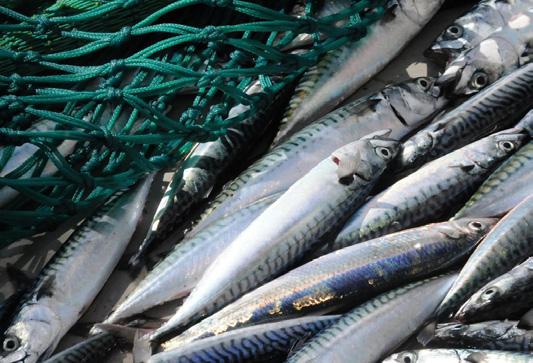
In a joint statement, the Northern pelagic Working Group of European Association of Fish Producers Organisations (EAPO) and the Association of National Organisations of Fishing Enterprises in the E.U. (Europêche) also stressed that this year’s UK-Norway bilateral deal has done nothing to end overfishing as it accuses Norway and the Faroe Islands of setting their own, unreasonable quotas.
“The unilaterally set Northeast Atlantic mackerel quotas by Norway and Faroe Islands, at unjustified levels and on the basis of a one-dimensional zonal attachment approach deemed highly flawed by scientists, remain unacceptable and work against the efforts to pursue an all-inclusive agreement,” EAPO Northern Pelagic Working Group Chair and Europêche VicePresident Tim Heddema said.
After attempts to agree quotas before 31 March 2023 failed, parties suspended talks and no formal meetings on mackerel were expected before the end
of September. This impasse has allowed Norway and the Faroes to inflate quotas by around 55%, argue EU fishers, with up to twothirds of Faroese catch being used for fishmeal and oil – a wasteful practice that they say will have a damaging effect on stock levels.
Moreover, the deal struck between the UK and Norway which has seen Norway agree to transfer nearly 25,000 tonnes of catch to the UK will have no effect on overfishing unless the UK decides not to use
its quotas.
“For truly sustainable management, a full-fledged sharing arrangement is needed between as many parties as possible,” Heddema said. “We repeat our urgent call for an immediate EU response to stop Norway and Faroe Islands continuing their unsustainable and irresponsible behaviour. “The EU has stuck to the shares agreed in 2014, but right now responsible EU businesses are being put out of business for doing the right thing.”
North Atlantic Pelagic Advocacy Group wants coastal states to take action to end overfishing in the Northeast Atlantic.
Despite a pledge by the EU and others to work to the UN’s sustainable development goals, NAPA has insisted that poor governance and inadequate management of fisheries has led to the decline of prized pelagic stocks.
“Fisheries around the world are under pressure and we should be able to look to the coastal states for leadership on responsible management and shared fisheries resources,” said
Dr Dave Robb, sustainability programme lead at NAPA partner, Cargill.
Commitments to regulate harvesting, end overfishing and illegal, unreported and unregulated (IUU) fishing, replace destructive fishing practices and implement science-based management plans by 2020 have been made by all seven coastal states.
The EU recently noted that “progress is being made towards sustainable fishing in the northeast Atlantic ocean”, but NAPA maintains that management is so poor that
Northeast Atlantic mackerel, Atlanto-Scandian herring and blue whiting have all been overfished for more than a decade leading to the loss of their Marine Stewardship Council certification.
“Loss of certification is impacting on progress against the SDGs as well as casting doubts as to how we can source sustainably from European fisheries,” Robb said. “These politicians need to put their words into action or their commitments to ocean stewardship and the broader SDGs are hollow.”

The European Union is ready to exchange fisheries control data using new common global standard, UN/FLUX, the Directorate-General for Maritime Affairs and Fisheries has confirmed. As well as harmonising data exchange, it will reduce costs and make fisheries control more efficient and accessible to public authorities.
Iceland Seafood
International (ISI) has agreed to sell 100% of the share capital of Iceland Seafood UK (IS UK) to Danish valueadded producer Espersen A/S. Espersen has factory operations in Europe and Asia and a significant part of its sales are into the UK retail market.
Biotech company ViAqua
Therapeutics completed a US$8.25 million funding round to help market its orally-administered vaccine for shrimp. It teamed up with S2G Ventures with participation from Rabo Ventures, The Trendlines Group, Agriline Limited, Nutreco, I-Lab Angels and Circle Investments to raise the funds.
Bringing more than 30 years’ experience from the FMCG industry, Jorge Escudero Hurtado has been recruited to the multinational seafood group to lead and enhance its growth and increase its profitability.

National Oceanic and Atmospheric Administration (NOAA) Fisheries has released its first-ever National Seafood Strategy for the United States, with its plan following several rounds of stakeholder input and a public comment period earlier this year.
The strategy underscores NOAA’s strong commitment to seafood sector resilience and aligns with the BidenHarris Administration’s goals for economic recovery, environmental sustainability, and climate resilience. Furthermore, the White House Conference on Hunger, Nutrition, and Health points to the need for increased seafood consumption in the United States, which this strategy aims to address.
It also responds to the unprecedented challenges facing the US seafood industry, including climate change, the coronavirus pandemic, new technologies and other ocean uses, significant labour shortages, and aging infrastructure.
NOAA Fisheries said its vision is to ensure that:
n US seafood continues to be produced sustainably
n The sector contributes to the nation’s climate-ready food production and
to meeting critical domestic nutritional needs n US seafoodproduction increases tosupport jobs, the economy and the competitiveness of the sector
n Supply chains and infrastructure are modernised with more value-added activity
n Opportunities are expanded for a diverse and growing seafood workforce
It explained it intends to achieve these aims by focusing on four goals:
1. Maintain or increase sustainable US wild-capture production
2. Increase sustainable US aquaculture production
3. Foster access to domestic and global markets for the US seafood industry
4. Strengthen the entire US seafood sector
According to NOAA, the public comments and stakeholder input were integral to finalising the strategy and helping guide the direction of work to support the seafood sector. It received more than 150 separate comments, about a quarter of which were from organisations, including fishing, aquaculture, seafood associations, non-profits, NGOs, aquariums and state agencies. In addition, five regional fishery management councils provided comment letters.
Many of the comments were used to strengthen and improve the strategy, particularly to clarify phrases or context, such as adding descriptions of other agency strategies and policies, it said.
The volume of fish and shellfish landed by Iceland’s fishing fleet in the first-half of this year totalled 772,954 tonnes, which represents a 10% decrease on the corresponding period of 2022. In value terms, the catch slipped 1% to less than ISK 101 billion.
By species, the demersal volume for the period 1 January through 30 June 2023 fell 13% to 207,994 tonnes, with its value down 6% to ISK 67.1 billion. Within this category, cod’s volume and value decreased 14% and 5% respectively to
118,092 tonnes and ISK 44.5 billion, saithe’s volume and value fell 42% and 35% to 20,700 tonnes and ISK 5 billion, and the redfish volume and value decreased 23% and 6% to 16,616 tonnes and ISK 4.7 billion. Bucking the trend, haddock increased 33% in volume and 9% in value to 31,808 tonnes and ISK 9.6 billion.
A 9% lower pelagic catch led to a 9% rise in value, with totals of 551,587 tonnes and ISK 26.9 billion. Of this, herring increased 85% in volume and 151% in value to 1,369 tonnes and ISK 90 million, mackerel was up 87%
in volume and 150% in value to 2,232 tonnes and ISK 149 million, and blue whiting climbed 41% in volume and 47% in value to 222,145 tonnes and ISK 7.9 billion. However, there was 27% drop in the capelin volume and a 3% fall in its value at 325,749 tonnes and ISK 18.8 billion.
Meanwhile, Iceland’s flatfish catch for the six-month period increased by 14% to 11,140 tonnes, with a value of ISK 6.3 billion – up 25%. Its shellfish catch was down 11% in volume to 2,232 tonnes but had an 8% higher value of ISK 538 million.
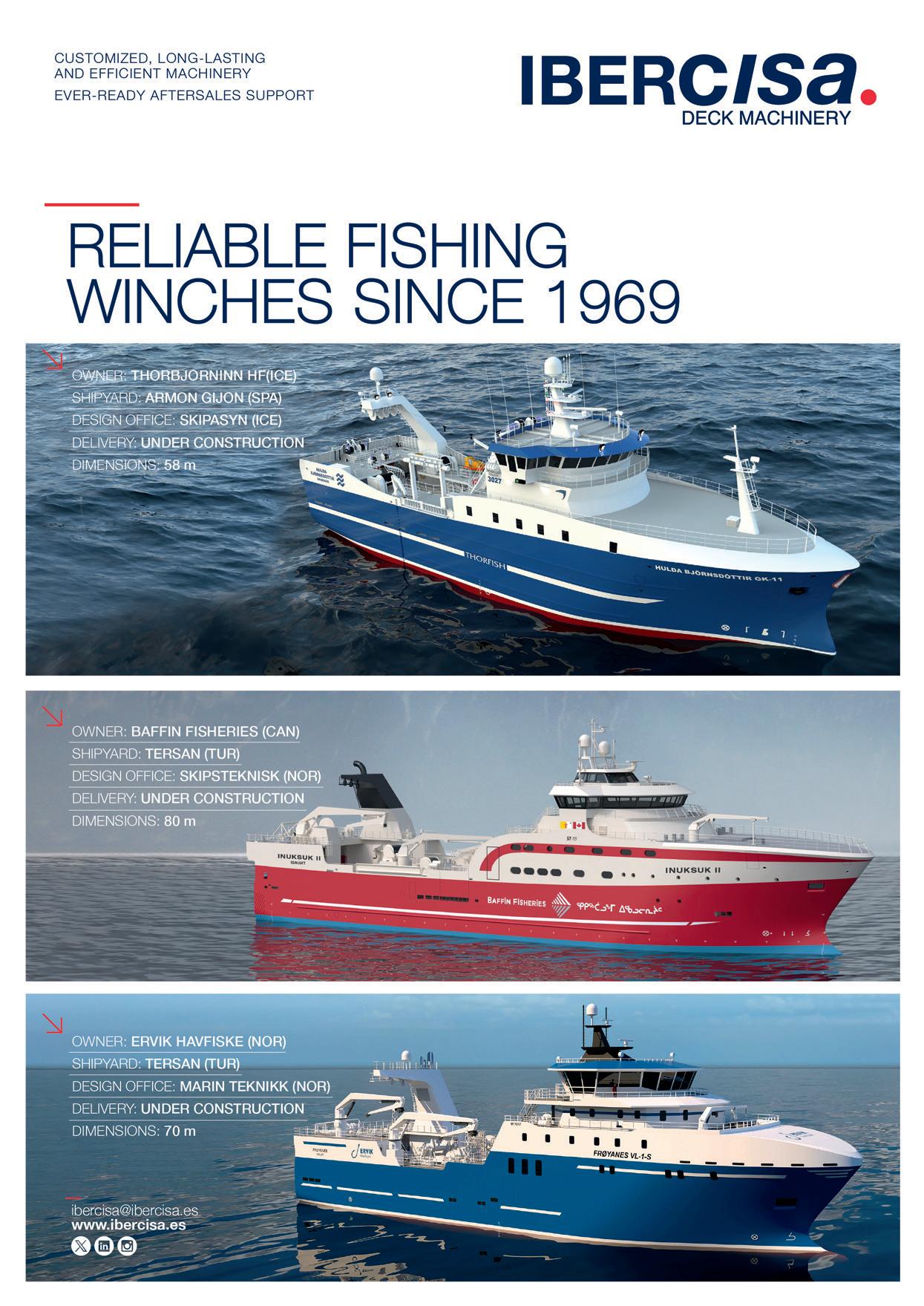
Japan’s government is to allocate more than ¥20 billion to support fisheries and other businesses in response to China’s decision to suspend imports of Japanese seafood, with the funds being in addition to ¥80 billion previously designated for similar purposes.
A new alliance has launched in British Columbia, Canada, to bolster the global effort to combat illegal, unreported and unregulated fishing. The Sustainable Fisheries Partnership has joined World Resources Institute, Norwegian Ministry of Climate and Environment, US State Department and others in the new Nature Crime Alliance and the Vancouver Statement on Nature Crime.
Land-based yellowtail kingfish producer The Kingfish Company NV has been boosted with the rejection of an appeal against its Maine project and the upholding of its state permits. It is the second appeal to be rejected at a state level.
Aimed at fostering leadership and innovation within the UK’s seafood processing cluster, the Grimsby Seafood Cluster has launched the new “Future Leaders” skills programme, saying the initiative will underscore the industry’s commitment to developing the next generation of leaders to drive sustainable growth and excellence.
Establishing Scotland as an international leader in the use of technology for responsible fisheries management and improving the policy and regulatory framework for the expansion of sustainable aquaculture are among the key objectives agreed for 2023/2024 by the Scottish Rural Affairs Secretary Mairi Gougeon and First Minister Humza Yousaf.
In a letter from the Scottish leader, published on 5 September 2023, Yousaf tasked Gougeon with introducing remote electronic monitoring (REM) to key parts of the fishing fleet, including all pelagic and scallop-dredging vessels fishing in Scottish waters, as well as the publication of a future catching policy for the fisheries sector.
With regards to aquaculture, Yousaf asked her to take forward the government’s Vision for Sustainable Aquaculture, which sets out its long-term aspirations for Scotland’s finfish, shellfish and seaweed farming sectors, and the aquaculture supply chain. As part of this, she has been asked to work with all sectors to deliver the key outcomes of the vision to support the sustainable development of aquaculture, particularly the
She’ll able to award up to GBP 14 million of grant funding through the Marine Fund Scotland to support projects to deliver improved social, environmental and economic outcomes in line with the government’s Blue Economy Vision.
Last but not least, Yousaf’s letter instructs Gougeon to continue pressing the UK government “to honour its commitment to maintain longterm funding for maritime/ fisheries following Brexit, and to take responsibility for the full costs of Brexit for our marine sectors and provide a fair and appropriate share of funding to Scotland above and beyond the GBP 14 million p/a (to GBP 24-25 million) currently provided for the Marine Fund Scotland”.
In the First Minister’s new Programme for Government, also published on 5 September, Gougeon wrote: “Scotland’s land and seas are vital to every aspect of our nation’s wellbeing. Protecting, nurturing, and restoring these assets and ensuring they sustain our people, businesses, and communities, now and in the future, is my priority.”
On the fisheries side she explained that the future catching policy would
develop new technical; and management measures, while a pilot of a new aquaculture consenting process in two local authority areas could help deliver a more streamlined regime and reduce the risk of escapes from fish farms.
Aquaculture trade body Salmon Scotland has welcomed many aspects of the new programme, including a promised “rural delivery plan”, but expressed concern about a reference to “next steps” in relation to Highly Protected Marine Areas (HPMAs).
Salmon Scotland CEO Tavish Scott said the Scottish government has “rightly recognised” the huge economic and rural contribution of the aquaculture sector, but added it’s clear that faster progress is needed to address “the cumbersome regulatory landscape in Scotland, which is holding back growth”.

Action is urgently needed, Scott said, but he also warned that if government resurrects HPMAs, the negative reaction will be “resolute, determined and considerable”.
He said: “We want to work in tandem with government to unlock the economic potential of Scotland and its rural communities, and salmon farming is key to delivering this.”
To support US west coast salmon and steelhead populations. NOAA FIsheries has recommended US$106.1 million in funding for 16 new and continuing programme and projects through its Pacific Coastal Salmon Recovery Fund Grant program.

NOAA Fisheries distributes funds to states and tribes through the programme. Eligible projects include all phases of habitat restoration and protection activities to recover Pacific salmon listed under the Endangered Species Act or to support Pacific salmon and steelhead species important to tribal treaty and trust fishing rights and native subsistence fishing.
Since the programme’s inception in 2000, the grant programme has provided more than $1.7 billion to implement over 15,000 salmon recovery
projects. It’s estimated that partners have protected, restored and created nearly 1.2 million acres of salmon habitat and have made over 11,800 stream miles accessible to salmon and steelhead.
“This targeted funding could not come at a more crucial time,” said Jennifer Quan, Regional Administrator in NOAA Fisheries West Coast Region. “With climate change exerting increasing impacts, we are proud to partner with states, tribes and communities to reopen and restore the habitat that affords salmon the resilience they need to survive and thrive. We will work together to make the most of these dollars to do the most good for salmon.”
In fiscal year 2023, NOAA is recommending $64.2 million in annual appropriation funding, including $34.4 million under
the Bipartisan Infrastructure Law and $7.5 million under the Inflation Reduction Act, for 16 new and on-going salmon recovery programmes and projects.

Recipients include the states of Alaska, Washington, Idaho, Oregon and California and
federally recognised tribes of the Columbia River and Pacific Coast (including Alaska) or their representative tribal commission or consortia.
Your advantages
More than 60 years of experience in separation technology
· Highest performance and separation efficiency
· Highest reliability and availability of machines and systems explicitly adapted to customers’ requirements
Highest possible cost efficiency due to continuous and automatic operation

Dr Craig Rose PhD – aka Doctor Seaweed – explains why we should say yes to more seaweed, with this long-forgotten, natural marine resource able to benefit many aspects of consumers’ lives

Seaweed is a massively underutilised marine resource that offers huge scope as a sustainable industry for coastal communities – developing and delivering products that meet multiple market demands. As a marine biologist, I have been working commercially with seaweed for nearly 20 years and spanning biofuels, food and nutrition. My key focus since 2015 has been on developing products based around a sustainable seaweed supply that delivers clear nutritional benefits to consumers, and in appealing ways that they can easily engage with. This market driven approach is, for me, key in seeing this nascent industry in the West able to grow and become a serious mainstream proposition.
Adaptive to shifting demand
There are various exciting projects around seaweed cultivation, which should attract public and private sector funding, but which are potentially without sufficient and clear markets into which to sell the resultant biomass at a commercially viable price. This puts their success at risk of being grand ideas that don’t deliver against the investments made. For these reasons, my company Seaweed & Co has developed a range of PureSea® seaweed ingredients for use in food and nutrition products, and a Doctor Seaweed® range of nutritional supplements.
The PureSea range – wild harvested and produced in the pristine Scottish Outer Hebrides – has been used in numerous nutrition and supplement products, as well as in foods by the likes of PepsiCo, M&S, Sainsbury’s and many more. The core benefits are providing flavour enhancement, and as a natural source of the essential nutrient iodine. In the UK, between 6684% of women are deficient in iodine, and 70% of people across Europe. Furthermore, seaweed has a proven “health halo” effect, where consumers have a positive health perception of products containing it
so long as it delivers on flavour if in food products.
The species used in the proprietary PureSea process is Ascophyllum nodosum, which offers a highly scalable supply into the thousands of tonnes per year.
I launched the Doctor Seaweed brand of nutritional supplements to partly meet this market demand. It also doesn’t rely on a culinary approach which consumers are still hesitant about. The Doctor Seaweed range is all based around the PureSea ingredient, plus other natural and plant-based nutrients to provide benefits including thyroid health, menopause support, immunity, focus and brain health, beauty-from-within, and energy and metabolism. Illustrating the growing mainstream appeal, the brand is stocked in Boots, Holland & Barrett, on QVC (UK and Italy), Amazon, and on its own website.

I’ve found this brand-driven approach means a quicker pivot into new market opportunities as they arise, and utilising the same seaweed ingredients, as well as taking on new ones as they come through. For example, seaweed snacks are relatively small in the UK, but growing rapidly, and it is one of the fastest growing sectors of snacking in the USA.
Doctor Seaweed as a brand can quickly adapt to launch the PureSea seaweed into their own brand/co-branded products and which will further consumer awareness and uptake of a highly nutritious and sustainable food. Other market wins are around fish and plant-based fish, where PureSea seaweed offers complementary flavours, a logical link back to the sea, and essential nutrition from the sea – iodine is sourced only from fish, dairy and seaweed. PureSea is ideal for use in coatings, pre-dusts, butters and sauces that can go alongside fish products.
Essentially, seaweed is something that most cultures around the world have used as it’s so incredibly sustainable and highly nutritious. We are now rediscovering this in the West, which gives genuine, positive hope for a sustainable and prosperous future.
n The Doctor Seaweed range of nutritional supplements
–
Seaweed has a proven ‘health halo’ effect, where consumers have a positive health perception of products containing it – so long as it delivers on flavour if in food products
n Dr Craig Rose
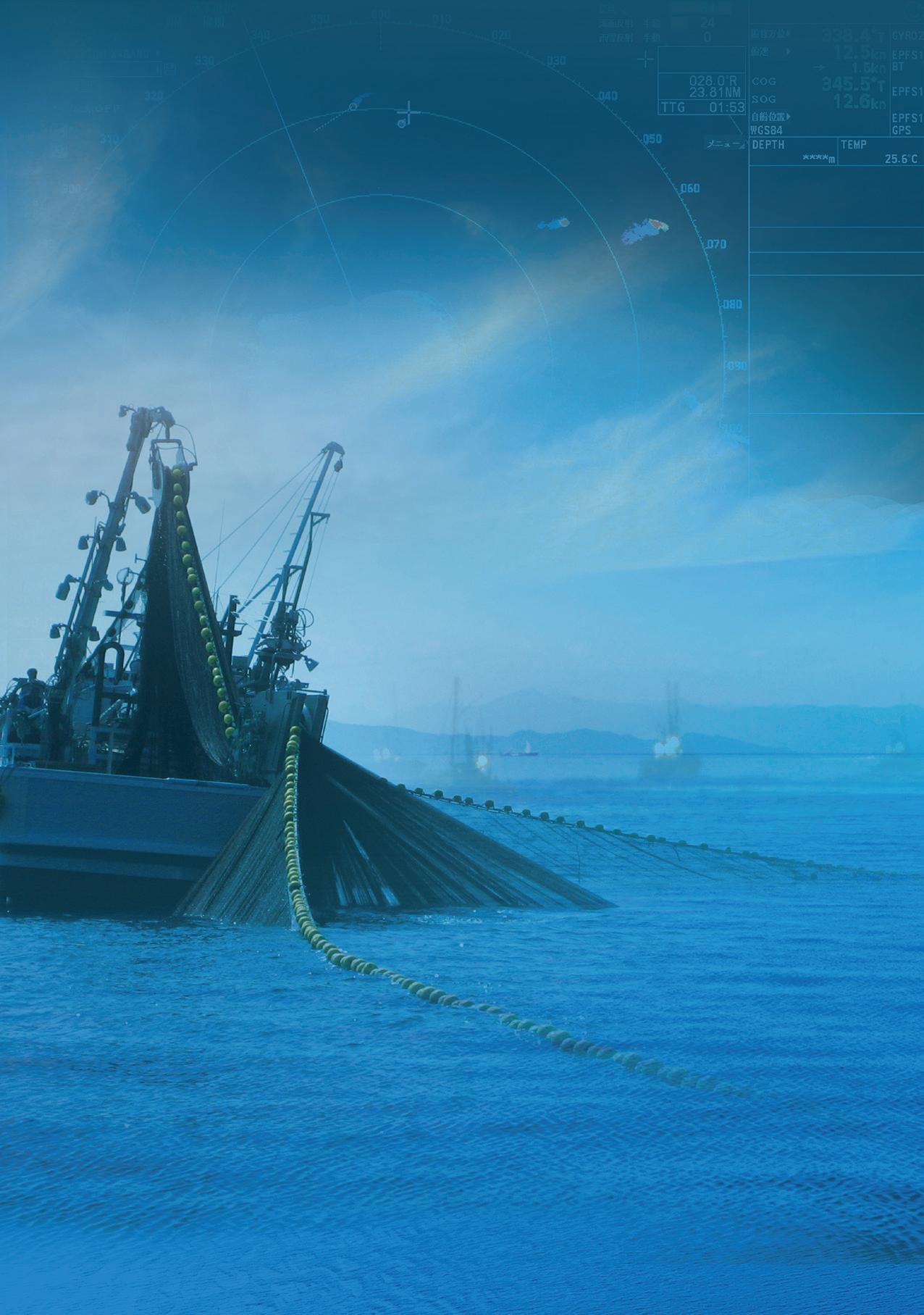

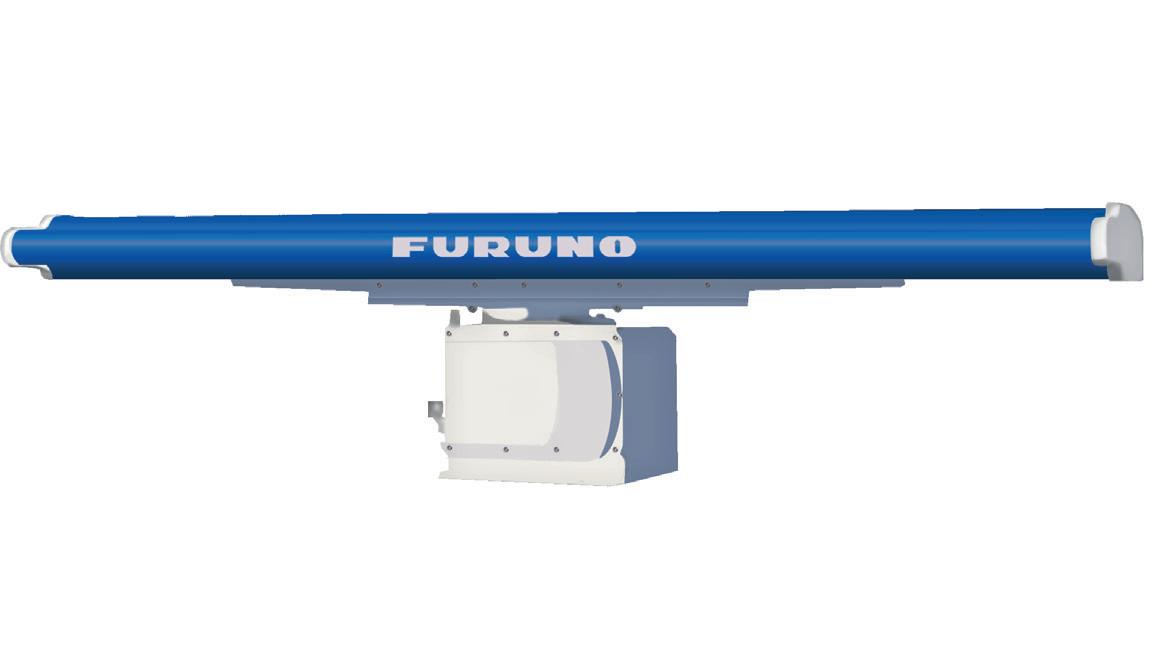



The country’s seafood industry was hit hard by February 2023’s devastating earthquake, with the damage and destruction likely to have long-term implications for a lot of operations. Fortunately, many others were unscathed and are soldiering on, writes
The Mw 7.8 earthquake that struck southern Turkey and northern Syria early this year has had a devastating effect on large parts of the region. As well as claiming some 44,000 lives and causing harm and heartbreak to so many more people, it’s also responsible for putting a big hole in Turkey’s food production. Indeed, the latest estimation from the Food and Agriculture Organization of the United Nations (FAO) is that around one-fifth of Turkey’s food production was damaged.
“Initial assessments of the earthquake’s impact in Turkey show serious damages in the affected regions in terms of agricultural infrastructure, livestock, crops, fisheries, and aquaculture,” the FAO stated.
The important fish production industry in the important Kahramanmaras province was particularly impacted by the quake, with local authorities reporting that it sustained considerable damage. This includes an anticipated 40% drop in the region’s trout production as a result of mass destruction and fish death. Historically, and despite there not being a coastline, the fish raised in the reservoirs of Kahramanmaras are exported to 15 countries, including Germany, Russia, the United States, Saudi Arabia and Iran.
At least 14 facilities suffered substantial damage due to the earthquake, advised Ibrahim Sarı, President of the Kahramanmaraş Fishermen’s Association. The disaster also led to colossal water supply disruptions across the region –killing fish in all land-based fish farms, while almost 50 cage farms in various in water reservoirs, primarily near dams, were affected to a lesser extent.
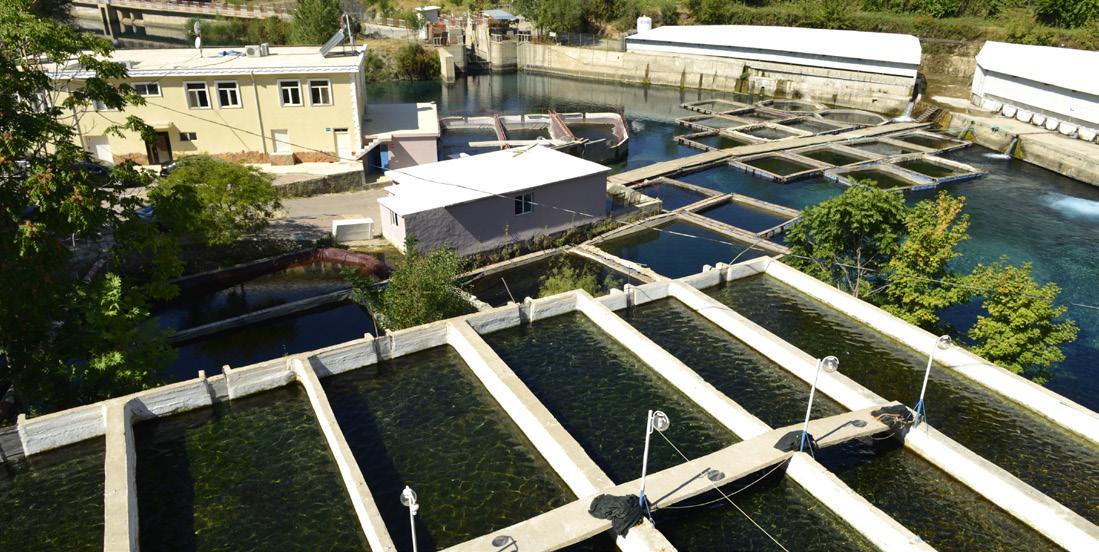 Vladislav Vorotnikov
Vladislav Vorotnikov
An assessment showed that 101 tonnes of fish and 37.4 million units of fish fry were lost, resulting in a total financial hit of TRY 63.2 million (US$ 2.4 million). This figure includes only direct losses, and if the cost of fish farm repairs were taken into account, it would be much higher.
Bass, bream intact
Not everyone feels the quake dealt a heavy blow to Turkey’s fish farming sector. Among those downplaying the scale of the impact is Bayram Öztürk PhD of the Faculty of Fisheries at the Turkish Marine Research Foundation with the Istanbul University.
“FAO estimations are groundless and are not scientifically-based. Maximum damage [to aquaculture] is 10%,” Öztürk said.
He also expressed doubts that the disaster would affect Turkey’s fish industry production performance, pointing out that the output has been steadily growing at a rate of 260,000 tonnes per year in the seabass (Dicentrarchus labrax) and seabream (Sparus aurata) segments alone in recent times.
“The earthquake impacted only trout (Salmo trutta) and carp, not other fish species,” Öztürk said. While the quake damaged dams and reservoirs in Kahramanmaraş and Sanlıurfa, where large fish farms and hatcheries operate, the damage was not tremendous, he told WF
The Turkish press has also reported that the country’s seabass and seabream sector was undamaged.

COMPLETE FISH FINDINGPACKAGE FOR BELOW NOK. 3.500.000


“For the optimum catch“
TOTAL SUPPLIER OF ELECTRONICS FOR SMALL AND LARGE VESSELS

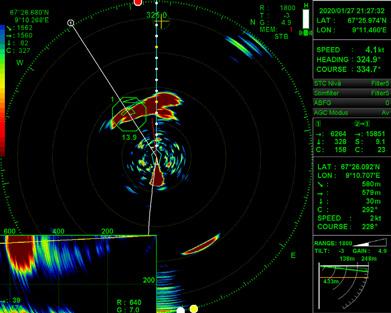
10 - 12 Oktober
Stand, A -108
Öztürk also explained that critical support has been provided to seafood businesses to overcome the consequences of the event. Chiefly, the Turkish government issued one-time support in May to aquaculture enterprises that were registered in the national aquaculture informational system and which had obtained the required aquaculture certificate on or before 6 February 2023 if they were determined as having been damaged within the scope of damage assessment by regional authorities.
Some support is also due to be issued to the fishing industry, with a number of reports indicating that several fishing vessels in the regions hit by the earthquake sustained damage, although in most cases this was deemed to be mild.
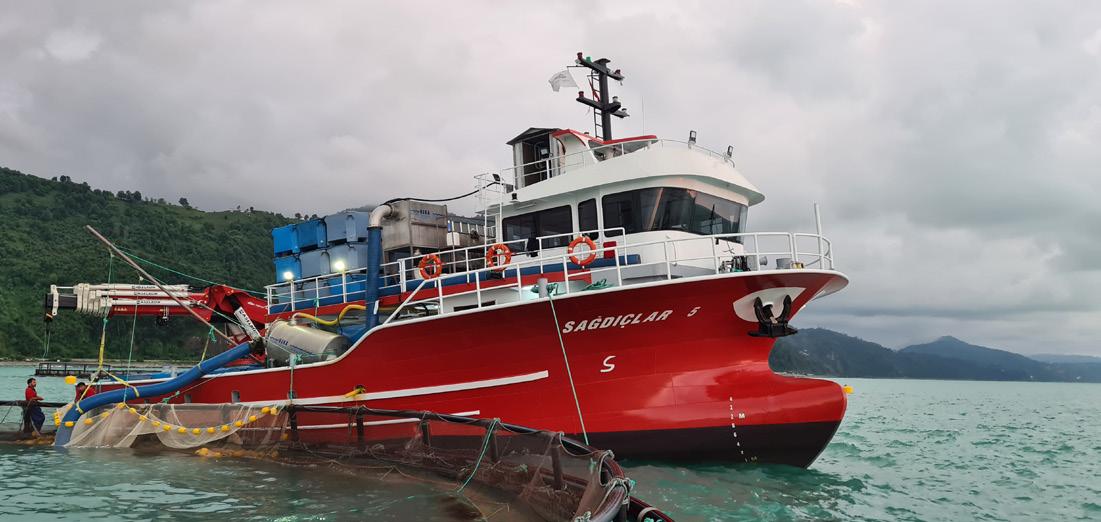
Lessons to be learned
Moving forward, it’s anticipated investors are likely to put their money into making their farms meet earthquake resilience codes, said Wasseem Emam, Founder of Ethical, Seafood Research and a PhD researcher at the Institute of Aquaculture at the University of Stirling.
have warned there’s a real threat of a new, possibly even more devastating earthquake in the coming years. Indeed, according to Turkish seismologist Naci Gorur from the Istanbul Technical University, the probability of a tremor measuring over seven magnitude occurring near the country’s largest city, Istanbul, within 30 years has increased from 62% to 80% in the aftermath of the 1999 disaster.
Producer resilience
Meanwhile, the 2023 quake has led Turkey’s government to run a new risk assessment in the fish farming industry. “About 12% of our country’s aquaculture is carried out in the earthquake zone provinces,” said Mehmet Nuri Yılmaz, Deputy General Manager of Fisheries at the Ministry of Agriculture and Forestry. “Most of these facilities grow trout. In 2021, 38% of the trout grown in inland waters throughout our country was produced in the provinces considered high-risk zones. Some aquaculture facilities in these regions have been seriously affected by the [2023] quake.”
Yılmaz also insisted that, as a whole, the Turkish fish farming sector continues to stand firmly on its feet.
“Compared to EU countries and our neighbours, Turkey maintains its leading position in aquaculture. Turkey ranks 18th in the world in terms of aquacultural production, growing more [fish and seafood] than any EU country. It ranks first in the world in seabream and seabass farming and second in rainbow trout farming,” Yılmaz said.
Turkey has introduced new building codes, requiring new construction to be earthquake resilient, not least following the 1999 Izmit earthquake in which over 17,000 people died, but these have often been loosely enforced in the country, both in the housing and industrial sectors. Poor building quality was believed to be one of the reasons for the high death toll and why so many businesses suffered heavy damage.
According to Emam, earthquakes are likely to become a greater consideration for Turkish businesses to factor into their strategies. It could also be that more investors set their sights on expanding into the territories not affected by this year’s quake, he said.
But the problem in this regard is that most of Turkey is located in the seismic active zone. Moreover, scientists
At the time of writing, it wasn’t clear what impact the quake would have on Turkey’s fish farming exports, which have been steadily growing during the past decade, exceeding $1 billion for the first time in 2020, largely helped by the country supplying 40% of the gilthead seabream and European seabass on the global market.
The Turkish Central Union of Fishery Cooperative had projected 2023’s export value to surpass the $2 billion mark and is yet to revise this estimate.
Nevertheless, it’s widely believed the quake will have an impact on the country’s farmed trout production, with Sari estimating the volume which stood at 17 million tonnes last year could drop to as low as 10 million tonnes in 2023. Next year, fish farmers hoped to raise 20 million tonnes, but it remains to be seen whether this target is within its grasp, he said.
n Seabass and seabream were not affected by the seismic events
The earthquake impacted only trout (Salmo trutta) and carp, not other fish species
Bayram Öztürk, Turkish Marine Research FoundationPhoto Credit: Sagdiclar Balikcilik
Considering the clear decline of Europe’s eel population, in 2007 the Council of the European Union adopted a regulation establishing measures for stock recovery with the requirement for each member state to submit a management plan to safeguard the species
Measures applied in France since 2011 include a reduction in fishing effort, restoration of the ecological continuity of eel environments, water quality in rivers, restoration of habitats and restocking activities.
Restocking is a transfer of glass eels from estuarine areas to the most favourable habitats, upstream of rivers. This avoids and compensates for mortality linked to obstructions in the passage of eels between seas and rivers, such as dams and polluted urban areas, which can hinder migrations.
By releasing glass eels in environments selected for good conditions and where eels have a scarce natural presence, restocking should provide a greater benefit than natural colonisation. The objective is to contribute to increasing the number of healthy spawners returning to the sea and thus accelerating the recovery of the stock.
Fisher support
Eel restocking, which has been practiced for decades in northern European countries, is accompanied by rigorous scientific monitoring in France, based on a protocol defined by the National Museum of Natural History (MNHN) and the Office Française de la Biodiversité (OFB), under the co-ordination of the Association for the Restocking of Eels in France (ARA France) and financed by the State and commercial fishing bodies.
According to ARA France, professional fishermen have a historical role in the implementation of this programme and are constantly providing substantial improvement work, in partnership with all stakeholders, in order to improve the quality of eels.
This study demonstrates new lessons on the effectiveness of the European eel restocking efforts in France.
“Restocking programmes are an effective measure to introduce eels into sections of rivers where they are no longer present – which also indicates that the upstream areas are no longer naturally supplied by recruitment, in particular due to the number of barriers to migration. The measured growth rates increase with distance from the sea, especially in large rivers, which suggests the benefit of selecting sections upstream of certain rivers,” a representative of ARA France commented.

“We need more studies in order to demonstrate more precisely the impact of this programme on the eel stock, although initial analyses are mentioned in the report. It indicates that the French restocking programme produces a substantial gain in silver eel production, in comparison of a scenario without restocking taking place. For example, stocked silver eels were found during their migration in the Loire in 2018 and studies in progress indicate that these stocked silver eels could contribute to 5-10% of the flow of eels migrating to breed.”
n Restocking a river with glass eels: The programme has been underway for more than 10 years and analysis indicates it has been effective
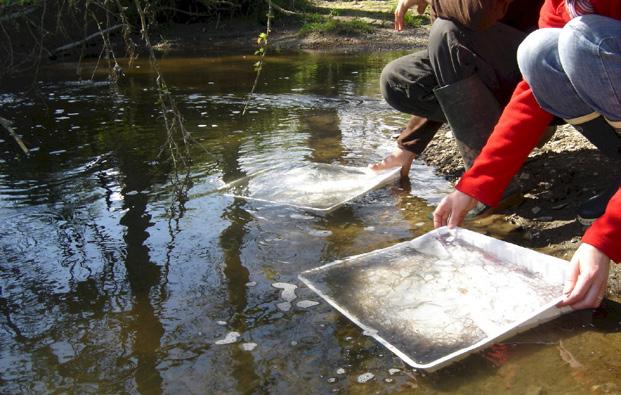
Some 60% of glass eel catches in France are reserved for restocking programmes in Europe, and 5-10% of total catches are earmarked for the French restocking programme. Between 2011 and 2021, 70 operations were carried out on the French Atlantic coast, totalling 28 tonnes of glass eels or 88 million individuals.
For the 10 years of the restocking programme in France, an analysis of the data, financed by ARA France, has been conducted by the MNHN and Fish-pass. This is based on data acquired during monitoring of eel populations carried out according to the protocol defined by the OFB and the MNHN. The data has been analysed to estimate the proportion of eels from restocking and eel growth.
Restocking programmes are an effective measure to introduce eels into sections of rivers where they are no longer present
ARA France

In Malta, work is underway to preserve underutilised fish biomass for use in new, innovative ways, reports Bonnie
WaycottAs a key source of high-quality protein and other nutrients, seafood is an essential part of the human diet, and with the global population continuing to rise, demand is likely to increase by up to 60% by 2050. However, the supply is being hit by numerous challenges such as overfishing, bycatch of protected species, global warming and changing consumer preferences, while another challenge lies in sustainable protein production and being able to feed people without polluting marine resources.
In Malta, consultancy firm AquaBioTech Group has joined forces with industrial partners and research institutes in Denmark, Norway, Iceland and Greenland for a three-year project called PROFIUS. It’s being funded by Blue Bio ERA NET and coordinated by Dr Ann-Dorit Moltke Sørensen at the Technical University of Denmark. The project aims to address challenges that prevent the reutilisation of lumpfish (roe and carcass) and tuna sidestreams and to find new ways to use these by-products.
One issue associated with seafood production is the management of large amounts of side-streams such as skin, bones and viscera. These contain precious bio-compounds such as fish oil, proteins and peptides, collagen, gelatin, enzymes, chitin and minerals. However, they are frequently discarded, causing environmental problems.
According to AquaBioTech Group, the main reasons for wasting such potentially valuable products are logistic. Tuna harvesting vessels have little refrigerated space for fillets, so the side-streams are transported to processing plants at air temperature with consequent preservation issues. It is also very difficult to transport animal by-products with food due to sanitary requirements on vessels.
Another example is that the different components of side-streams are not separated as the process is timeconsuming. However, separating the different parts is important – it would allow for products with a higher protein content, while some valuable bio-compounds can only be found in specific parts such as the skin or the liver.
PROFIUS is aiming to develop preservation solutions to maintain the quality of side-streams and use them in new, innovative ways. It is also investigating new applications for lumpfish and tuna side-streams and analysing the logistical operations to make their use possible and commercially valuable.
“AquaBioTech Group’s mission is to improve aquaculture’s sustainability and efficiency and develop technologies and models that help address environmental and social challenges,” Dr Simona Paolacci and Dr Giovanni M. Cusimano, scientists at AquaBioTech Group told WF. “Our Research and Innovation department focuses on projects that aim to improve aquaculture systems and address environmental issues. The reutilisation of tuna side-streams is framed in this objective. In Malta, sidestreams have been either incinerated or discarded into the sea with negative environmental impacts. We had the idea of applying the concepts of circularity and sustainability to transform waste into something valuable.”
Discarded tuna side-streams in the sea are also a source of pollution with consequent damage to marine ecosystems, while incinerating side-streams has a price to pay in terms of air quality and carbon emissions, said Paolacci and Cusimano. With the farming of Atlantic bluefin tuna (Thunnus thynnus) worth over €150 million in

Tuna side-streams are rich in protein, lipids, amino acids, vitamins and other valuable compounds
Dr Simona Paolacci and Dr Giovanni M. Cusimano, AquaBioTech Groupn The PROFIUS project is looking to address challenges that prevent the reutilisation of tuna side-streams and to find new ways to use these byproducts Photo Credit: AquaBiotech Group
2021 and a significant contributor to Malta’s economy, the industry has room to embrace sustainability and circular approaches more fully, ultimately benefitting farmers and the environment.
In Malta, adult and juvenile wild bluefin are caught offshore in the summer and transferred to floating sea cages where they are intensively fed and grown to market size.
Harvesting occurs from October to January. Whole fish are filleted on purpose-built vessels where prime cuts are stored in freezers, and the product is then shipped to the appropriate market. Off-cuts including the head, tail, fins, viscera and bone material have historically been discarded into the sea during harvesting, despite their potential to be developed into other products.
“Tuna side-streams are rich in protein, lipids, amino acids, vitamins and other valuable compounds that, if properly processed, can be used to produce fishmeal and fish oil,” said Paolacci and Cusimano. “Bioactive compounds, such as polyunsaturated fatty acids, collagen, gelatine and molecules with antioxidant activity can also be extracted from them.”
Aquafeeds
As part of the PROFIUS project, AquaBioTech has been investigating the transformation of tuna side-streams into fishmeal and fish oil to be included as raw ingredients in fish feed and tested in commercially relevant species. Biomolecules have also been extracted from side-streams such as the liver, head or mixed waste.
With the Norwegian University of Science and Technology, another PROFIUS partner, new extraction techniques are being developed, while other uses of tuna side-streams are also possible, for example as fishmeal and fish oil in pet food or as bioactive compounds for nutraceuticals, pharmaceuticals and human food. Hopes are high that turning tuna side-streams into alternative products will bring key benefits to Malta’s tuna farming, such as less water and air pollution, a secondary revenue and increased public acceptance of tuna aquaculture.
Tristan Camilleri is technical and regulatory manager at Aquaculture Resources Ltd, the operating arm of the Federation of the Maltese Aquaculture Producers, which represents 75% of Malta’s tuna farming. The federation implements projects that are deemed important and relevant to Maltese aquaculture, one of which is a new plant that treats side-streams from tuna processing for the
pet food and animal feed industries.
“Bluefin tuna from aquaculture establishments has specific quality parameters that are targeted towards Japan’s sushi and sashimi markets,” said Camilleri. “The fish are particularly oily and of a very high quality that is not comparable to wild fish. This also applies to tuna sidestreams, which makes them very attractive for the animal feed and petfood sectors.”

The new plant is a low-temperature rendering plant, where materials from the cooker are discharged to a tricanter (centrifuge) and separated into the solid phase (grax), oil and another liquid phase with solids (stick water). All material is processed less than 24 hours after harvest due to the short distances between the plant and tuna farms.
Raw materials are also inspected visually and samples taken for testing (histamine, total volatile basic nitrogen etc). With great interest from around the world in the plant’s fishmeal and fish oil, Camilleri is confident that alternative products from tuna side-streams will become more mainstream.
Aquaculture is continuously targeting new protein sources to rely less on marine and soy-based ingredients. According to IFFO estimations, around 30% of the global production of fishmeal and around 51% of fish oil are currently produced from fish by-products. Moreover, raw materials like insects and single cell protein (algae, yeast and bacteria) have been identified as valuable alternatives, said Paolacci and Cusimano. “We believe that producing fish feed from alternative protein sources will soon be a necessity and that aquaculture will head more in this direction,” they concluded.
Camilleri agrees. “The quantities produced at our plant depend greatly on the quantities of Atlantic bluefin tuna that are available for farming, and this is a highly-regulated sector based on quotas and total allowable catches,” he said. “However, with the circular economy becoming increasingly important, I hope that we will see more alternative products from tuna side-streams in other sectors.”
Going forward, AquaBioTech will focus on evaluating the fish feed formulated with different inclusion levels of tuna fishmeal and oil that is due to be tested in European seabass and shrimp. The company is also working to optimise the preservation of tuna liver using rosemary extract and targeting more bioactive compounds for extraction.
n Historically, heads, tails, fins, viscera and bone materials have been discarded into the sea during harvesting despite their potential to be developed into other products
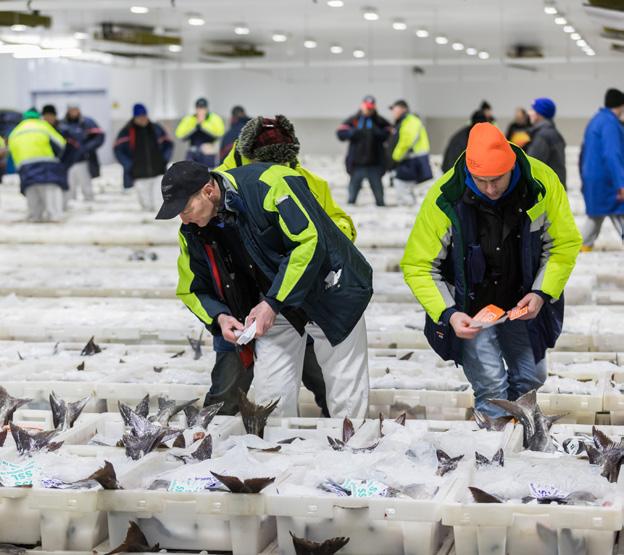
Every year, Seafish fleet survey researchers head to ports across the UK to talk to fishing vessel owners and ask questions about their performance. The data collected for the public body shows the annual economic performance of the fleet in 2021 and preliminary estimates for the year 2022, based on samples of their costs and earnings. When comparing data with the two previous years, the 2022 preliminary estimates paint a picture of the performance of the fleet in a post-pandemic landscape, with many of those surveyed reporting that financial struggles remain a major concern.
The survey work also showed that in terms of the size of the fleet, the number of active fishing vessels continued to decrease in 2021 and 2022 leaving the UK fishing fleet with just under 4,080 active vessels in 2022. Of that number, around 1,300 were deemed by Seafish as low activity, reporting an annual income of less than GBP 10,000.
Covid-19 effects and associated lockdown measures continued to be felt into the first part of 2021, combined with the new trade requirements after EU exit, Seafish found. However, there were indications of economic recovery by the second half of 2021 as prices and demand recovered. Total operating profit of the fleet in 2021 was GBP 256 million, a 5% increase from 2020 although still below the GBP 267 million of 2019.
In 2022, the start of the Ukraine war and subsequent rise in fuel prices dramatically altered the landscape. Total spend on marine fuel in 2022 was an estimated GBP 195 million, a 75% increase from 2021. As fuel prices increased, total operating costs also went up reaching the highest figure in the last four years.
“Our preliminary economic estimates show that 2022 was another difficult year, with fuel costs impacting profits as we predicted back in April 2022. The rise in fuel prices had a significant effect, partially counteracted by a global shortage of whitefish due to the Russian-Ukrainian conflict. Sanctions on Russian seafood increased average prices of whitefish fish while increased demand drove up prices of shellfish, which helped many businesses stay afloat,” said Seafish Economics Analyst Marta Moran-Quintana.
“It is still too early to assess how other costs, such as labour and wages, have changed. We are working to get better understanding of changes in costs structures and fleet adaptability to economic pressures experienced last year.”
The data has been published in Seafish’s online Fleet Enquiry Tool.
n Fish prices increased significantly in 2022, with the average price per tonne landed climbing for many species
Rising costs on gear, packaging and insurance put further pressure on fishing businesses, negatively impacting vessel owners all over the UK, the survey results showed.
As fuel costs went up, so did market prices. Fish saw a significant price increase in 2022, as the average price per tonne landed increased for many species. Nephrops prices, for instance, were 39% higher on average while scallop prices went up 18% compared to the previous year, although scallop average prices were still lower than pre-Covid-19. This translated into higher revenues for the fishing sector with turnover of the fleet at around GBP 1 billion, a figure similar to 2019 (pre-Covid-19 and EU exit). However, with the cost of living and fuel prices rapidly escalating, profits dropped, with the fleet making 13% less profit than in 2021 and 17% less than in 2019.
Seafish’s 2023 fleet survey is already underway with the body’s researchers talking to skippers and vessel owners about the performance of their business. The survey is set to close at the end of September.
Fleet survey researcher Rebecca Spain is in her second year at Seafish. On her impressions of 2023 after talking to vessel owners, she said: “Last year, one of the biggest challenges was the soaring fuel costs, which took a significant toll on fishermen’s businesses. Vessel owners tell me that while this year saw a drop in fuel prices, the ongoing cost of living crisis and inflation continues economic pressure on business expenses. Some fishers have also seen their harbour dues and insurance rise by 10% in 2023.”
Our preliminary economic estimates show that 2022 was another difficult year, with fuel costs impacting profits
Marta Moran-Quintana, Seafish
National Oceanic and Atmospheric Administration’s 2023 report to US Congress identifies seven entities for illegal, unreported and unregulated fishing.
The latest ‘Improving International Fisheries Management’ report also points out two nations responsible for issues relating to forced labour and two identified for issues related to shark catch.
“Oceana applauds the Biden administration for taking decisive action to fight illegal, unreported and unregulated (IUU) fishing,” said Beth Lowell, vice president for the US, Oceana, who welcomed the report. “The United States, for the first time, is identifying countries in the report for both IUU fishing and forced labour. NOAA [is] taking action against countries that fail to follow the rules is one essential tool in the US government toolbox to improve fisheries around the world.”
The 2023 report identifies Angola, Grenada, Mexico, China, Taiwan, The Gambia and Vanuatu as nations and entities participating in IUU fishing.
This year is the first time the report has also identified forced labour and shark catch in IUU fishing identifications. The biennial report, required under the High Seas Driftnet Fishing Moratorium Protection Act, identifies nations that fail to address IUU fishing, bycatch of marine wildlife and shark management.
Once identified, the United States collaborates with those nations to address their problematic fisheries issues. The report now triggers a two-year process for the identified nations to take the necessary steps to address IUU fishing.
If a nation takes appropriate actions, it will receive a positive certification in the next report. If not, it receives
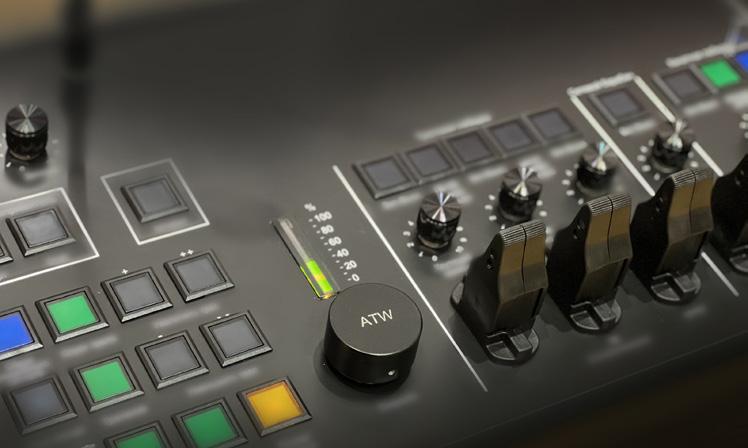

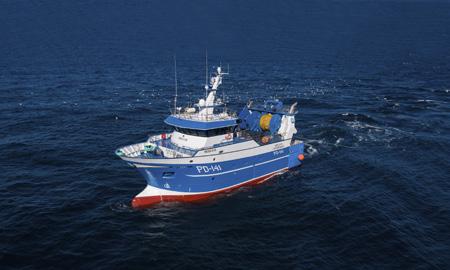

a negative certification, triggering a denial of US port privileges, among other measures, including potential import restrictions.

The 2023 report announced certification determinations for 31 nations and entities for illegal fishing and/or by-catch of protected living marine resources from its 2021 report, including positive certifications for Costa Rica, Guyana, Senegal and Taiwan.
n NOAA’s report has identified seven entities for IUU fishing
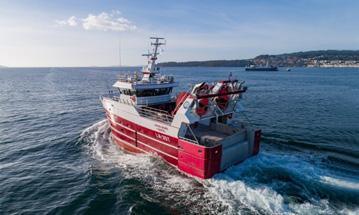
A dedicated pelagic trawler, designed to operate on much the same lines as the vessel it replaces, new Altaire carries one of the Shetland fleet’s famous names
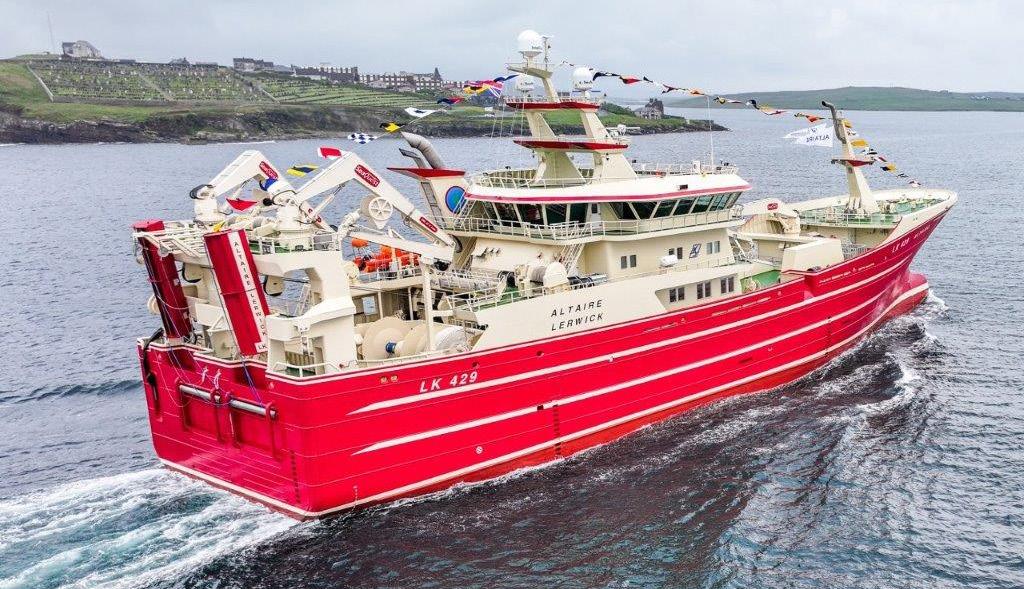
There’s been a long series of pelagic vessels sailing from Shetland under the Altaire name, with the last few built at Norwegian yards. However, this time around, the Altaire Fishing Company opted to build at Karstensens in Skagen, with the new vessel built to the yard’s own design. According to Kent Damgaard at Karstensens Skibsværft, there has been a longstanding working relationship between the yard and the owners of Altaire, which has been a regular caller at the Skagen yard for repairs and maintenance.
Altaire Fishing Company is owned by Interfish, headed by Jan Colam, in partnership with skipper Chris Duncan and chief engineer Ivan Reid.
New Altaire is a major step forward in terms of operational efficiency compared to the previous vessel, which has fished with great success over the years, and which is now with new owners in the Faroe Islands. The new vessel will operate on herring, mackerel and blue whiting on an established pattern, with catches delivered fresh in RSW.
Handed over to its owners at the end of June, Altaire’s steelwork was completed at the Karstensen Shipyard Poland in Gdynia and the partly outfitted hull arrived at the yard in Skagen in November last year. The spec and arrangements are the result of close co-operation between the owners and the yard’s design team with the focus on optimal working and living conditions for the
crew, maximising catch value through the best possible handling and storage and ensuring that fuel consumption and energy usage are as efficient as possible.
High-spec
The 79.95-metre LOA, 17.5-metre moulded breadth Altaire’s 14 RSW tanks provide a 2,935 cubic metre carrying capacity. Catches are pumped at the stern and routed to the selected tanks via the separator, and the tanks are chilled by a double Johnson Controls system, each of which has a 1506kW/1.295.000kCal/h cooling capacity to bring temperatures down rapidly. The RSW circulation system operates with remote operated valves through Johnson Controls control system.
C-Flow supplied the vacuum system with four 87kW compressor units and twin 4,200-litre tanks. Altaire’s deck layout is from Karmøy Winch, with a pair of 91-tonne trawl winches managed by a Karmøy autotrawl, and 110-tonne net drums. The hydraulic Karmøy package includes a 71-tonne topline winch and a 57-tonne tail-end winch, as well as a pair of netsounder winches mounted on the aft gallows, a variety of smaller winches and the hydraulic hose and fish hose reels for the pair of 20-inch fish pumps supplied by SeaQuest Systems, which also supplied the foredeck crane and the deck cranes aft, with a net crane and a fish pump crane mounted on the aft gallows.
360° visibility wheelhouse is outfitted with a
Furuno-UK Video wall control system that utilises five 55inch and 22 32-inch Hatteland monitors. The fishfinders are a range of Simrad and Furuno equipment, with ST94 and FSV-25 low frequency sonars, MF-90 and FSV-85 medium frequency sonars and an SN90 bow scanner. The echo sounders are an ES80, plus FCS-38 and FSS3-BB and a Wassp 80kHz 3D sonar. The trawl-mounted electronics are a Simrad FS-70 trawl sonar and a Marport array of sensors. The current indicator is a Furuno CI68.
Plotters are a pair of MaxSea Time Zero sets, a 3D Olex and a Sodena unit, as well as a Furuno FMD-3200 ECDIS. The radars, GPS sets, GPS compasses and AIS are all Furuno equipment, while the AP-70 autopilot, and the three RGC-80 gyro compasses are from Simrad. Cobham Sailor supplied the 900 V-sat communications and SatöTV systems, as well as the A3 GMDSS setup and VHFs.
Crew comfort
Accommodation is outfitted to an exceptionally high standard by Maritime Montering, with six ensuite single cabins for crew and engineers at main deck level, along with the laundry, sauna and gym. At the shelterdeck level, there are six single crew cabins and a sick bay, as well as the steam room, changing room and a coffee bar. The superstructure at this level incorporates a large gear workshop in the starboard side.
Cabins for the skipper and mates are located in the upper boat deck, with four single cabins and a conference room. The main crew areas are at lower boat deck level, with the day room, mess area, galley, provision room and coffee bar. To minimise noise levels, the accommodation has been placed as far as practically possible from the propeller, in addition to other measures to ensure low noise in the crew’s living areas.
Altaire’s owners went to Wärtsilä for a full propulsion package, with the main engine driving a 4,200mmdiameter 4G1095 propeller via a two-step SCV 100/2PDC68 reduction gearbox providing options of 138 and 116 propeller rpm.
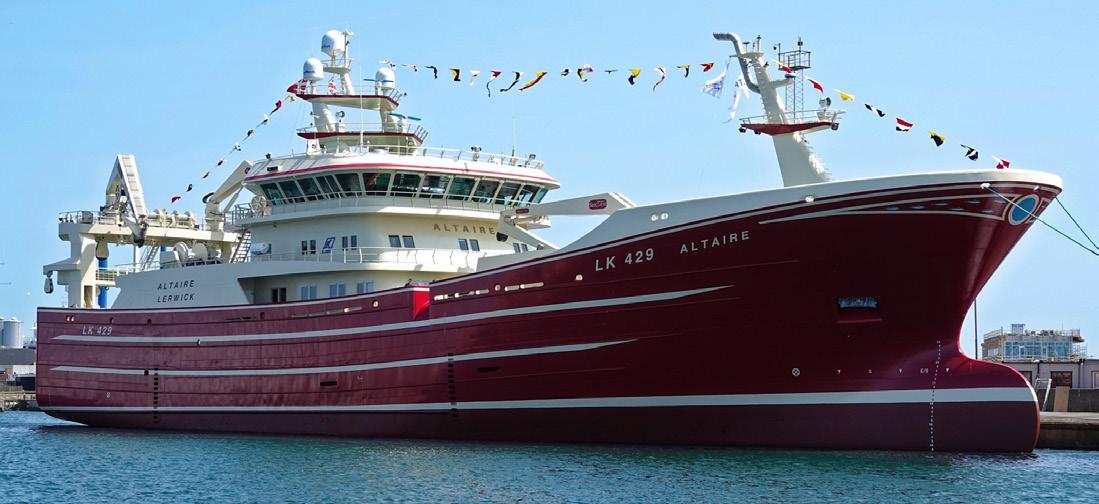

In a power arrangement that has become standard with the long series of pelagic vessels designed and delivered by Karstensen, Altaire’s Wärtsilä 12V31 main engine serves as the primary power source for both propulsion and the hydraulic systems, working on the principle that when hauling and shooting, there’s a reduced requirement for propulsive power, and while towing the demand from the hydraulics is lower.
Under this setup, the 3300kW Marelli shaft generator can be disengaged from the from the switchboard while towing, leaving the two 1158kW Wärtsilä W16V14 gensets to meet the demands of the ship’s electrical network. The gensets are able to connect into main switchboard, controlled by the vessel’s DEIF Power-ManagementSystem. Further on a bus-bar breaker is fitted in main switchboard, allowing aft thruster to be fed off shaft alternator and forward thrusters and vessel’s hotel load off from the gensets.
The 1400kW FU74 aft thruster and the 1470kW AR80 retractable thruster are supplied by Brunvoll. The high-lift flap rudder is from Kongsberg and the steering gear is a Kongsberg Tenfjord SR 72 unit.
The electrical power system is arranged for sliding frequency (60-50 Hz), by means of frequency converters for 400/440V and rotating frequency converter for 230V. This allows the main engine and propeller revs to be reduced by 17%.
The design incorporates a take-me-home option, with a clutch between the main engine and gearbox. A separate pony motor allows the shaft generator to start up as an electric motor, fed off the auxiliary engines. Up to 1500kW can be used for this diesel-electrical propulsion drive.
n Altaire’s deck equipment is from Karmøy Winch, with deck cranes from SeaQuestBuilt for Bakkafrost Scotland, the 24-metre Turas a ‘Bhradain is the first of a tailor-made pair of vessels designed to carry out a range of tasks from carrying general cargo to conducting specific aquaculture services

Multi-purpose workboat Turas A ‘Bhradain has been built at Macduff Shipyards to a design developed by partner company Macduff Ship Design. It has a large open working deck with offset port casing for improved starboard side access, and a large forward ramp. This layout enables it to meet a wide variety of operational requirements.
Turas a ‘Bhradain will operate across Bakkafrost Scotland’s sites on the west coast and Hebrides and has been delivered following a year-long construction period which followed a detailed design process involving the owners and operational staff, the shipyard and Macduff Ship Design.
Construction is entirely from steel to provide a hardchine, landing craft, hull form. The final touches were completed on the vessel earlier this month, followed by final trials and delivery. The design was a development of the highly successful Helen Rice and Geraldine Mary workboats designed by Macduff Ship Design.
Initially, Turas a ‘Bhradain will be operate alongside Bakkafrost Scotland’s wellboats Ronja Star and Ronja Fisk, playing a key role in fish health by preparing the pens for the wellboats to carry out freshwater treatments.
Main propulsion is provided by twin tier III compliant Doosan 4l 126 CAKH engines delivering 373Kw @ 2000rpm to drive twin 1500mm propellers supplied by Teignbridge propulsion. These are fitted in nozzles to give excellent levels of bollard pull and there is also a stern thruster, both of which were supplied by Kort Propulsion, which when
combined with the twin screw set up gives excellent lowspeed manoeuvrability for operations in and around the fish farm cages.
Fuel capacity is for 14,000 litres and 5,000 litres of fresh water can be carried.
On deck, there are two marine cranes to starboard both supplied by HS Marine, AK61 4E and AK30 HE3 units.
The hydraulic package also comprises three capstans all arranged to starboard, an anchor windlass, hydraulic rams for operation of the bow ramp and a tow winch situated on the centre line. Due to the offset position of the casing, the winch can work both aft over a stern roller or forward over a narrow roller built into the bow ramp.
The 24-metre, 9-metre breadth Turas a ‘Bhradain has a 125-tonne deck cargo capacity and there are deck fittings for three 20-foot ISO containers.
n Turas a ‘Bhradain has an extensive deck machinery package and an impressive cargo carrying capability for a vessel of this size
Spain’s Freire Shipyard has contracted Longitude Engineering for the basic design of a newbuild research vessel that it is building for IFREMER, the French Research Institute for Exploitation
The design will focus on low fuel consumption and emissions, powered by a diesel electrical hybrid propulsion.
Once the research vessel has been built by Freire, IFREMER will use it in Atlantic coastal areas, for research across all oceanographic disciplines including geosciences, ecosystem functioning, and other purposes related to the protection of fisheries.
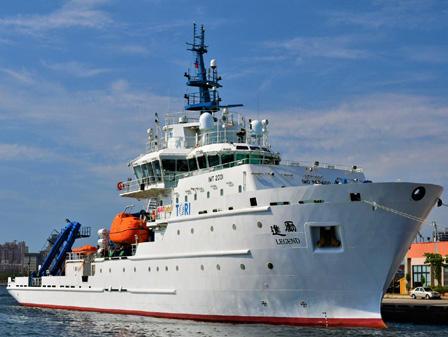
The vessel design builds on Longitude’s track record in developing research vessels, including the RV Legend for the Taiwanese Ocean Research Institute (TORI), as well as in its track-record in engineering, design and analysis of hybrid electrical models as an alternative fuel.
It will be 40 metres in length, with a beam of 10.35 metres and a limited draft. It will accommodate 12 crew and 10 scientists, allowing for training campaigns with teachers and students onboard.
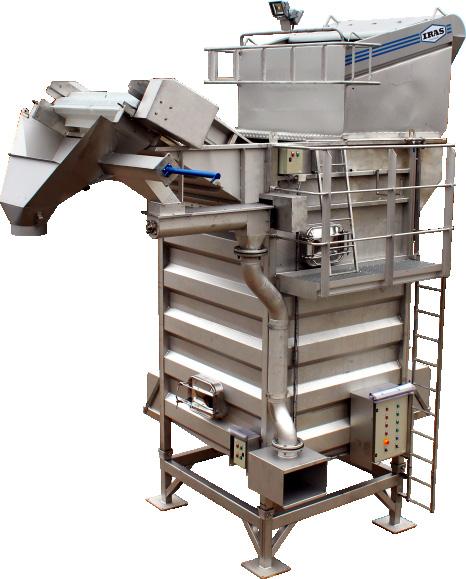
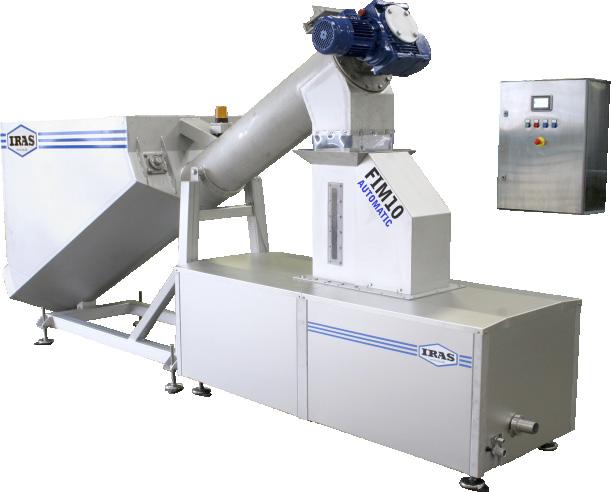

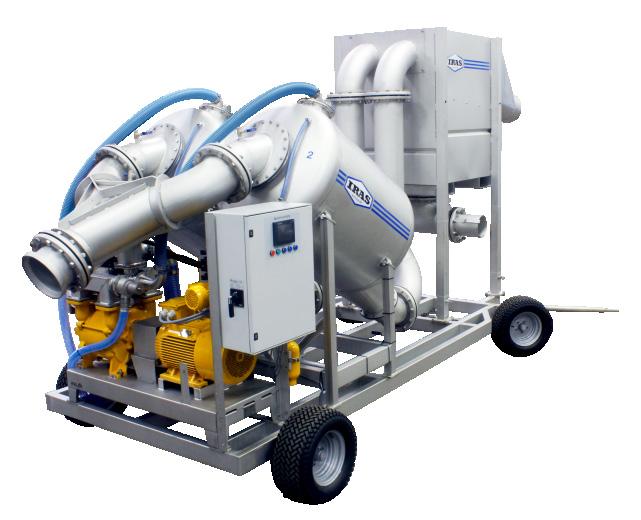

Scottish government-funded study seeks to expand the knowledge and understanding of seabird by-catches in the offshore longline fishery for hake in UK and EU waters. This is being done through new data analyses and dialogue with the industry, with possible solutions being explored
n The offshore longline fishery for hake in UK waters is currently pursued by 14 UK-flagged vessels and a number under EU flags
Scottish government has a strong commitment to providing a clean, healthy, safe, productive and biologically diverse marine environment, and the Marine Scotland 20-2019 Programme for Government committed to identify actions to address the significant declines in seabird populations through a new Scottish Seabird Conservation Strategy (SSCS).
The developing SSCS highlights the vulnerability of seabird species to a range of human pressures, including incidental by-catch in fisheries. Consequently, estimating bycatch levels and understanding the possible effects of bycatch mortality on seabird populations (and reducing it where necessary) forms a fundamental element in supporting Scottish government’s long-term environmental ambitions.
Under the UK Fisheries Act (2020), the ecosystem objective calls for any incidental catches of sensitive species to be minimised and, where possible, eliminated.
Scotland’s Fisheries Management Strategy (2020-2030) also includes an international commitment to monitor and reduce incidental by-catches, including those of marine mammals and birds. The strategy also embraces an ecosystem-based approach to fisheries, with a focus on “conservation of vulnerable and protected species, for example, by limiting unwanted by-catch and encouraging proper handling practices when returning protected species to the sea”.
In 2020, data collected by onboard observers from the UK Bycatch Monitoring Programme (BMP) were used
to produce the first broadscale UK seabird by-catch estimates for net, pelagic trawl and longline fisheries. This work highlighted a few fisheries, where by-catch rates of seabirds appeared to be relatively high – with the caveat that some data was sourced from small sample sizes relating to some fisheries methods and the likelihood that sampling data may be biased for a variety of reasons, including uneven spatial and seasonal coverage.
The offshore longline fishery for hake, currently involving 14 UK-flagged and a number of EU-flagged vessels, was highlighted as demonstrating relatively high rates of seabird by-catch. Data gathered between 2010 and 2018 over a relatively narrow sample of just 14 trips indicated the seabird by-catch to be in the region of 4,500 birds. However, confidence intervals around the estimates were wide and the estimates were based on a small sample size over a nine-year period that might not have been representative of the fleet activity in the years 2016 and 2017 for which the estimates were produced.
Most of the recorded seabird by-catch was of northern fulmar, a species which has shown a shallow decline in numbers at nesting sites in Scotland since the mid-1990s. Although the drivers of this decline are not known in detail, they are considered most likely to be due to a decline in the North Sea whitefish industry and lower volumes of discharged offal from fishing vessels.
Following the publication of the 2020 report, the fishery came under increased attention from some conservation groups, prior to which one of the two main industry bodies representing UK longliners had already expressed a wish to explore by-catch mitigation measures – and informal discussions had already begun.
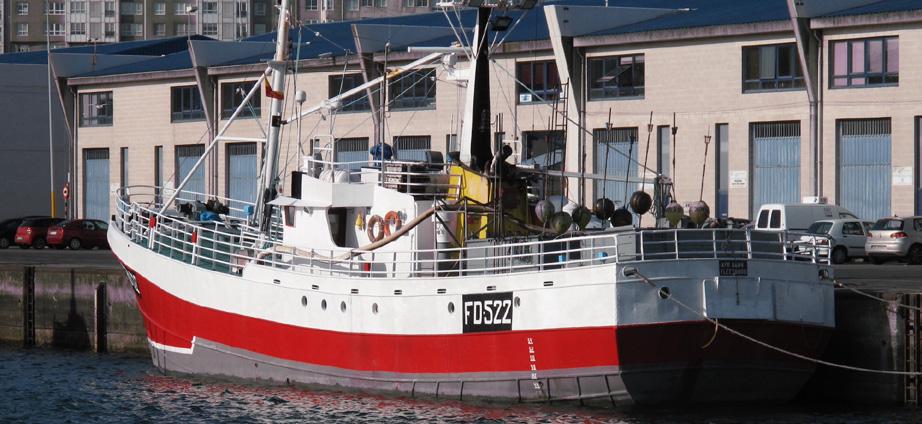
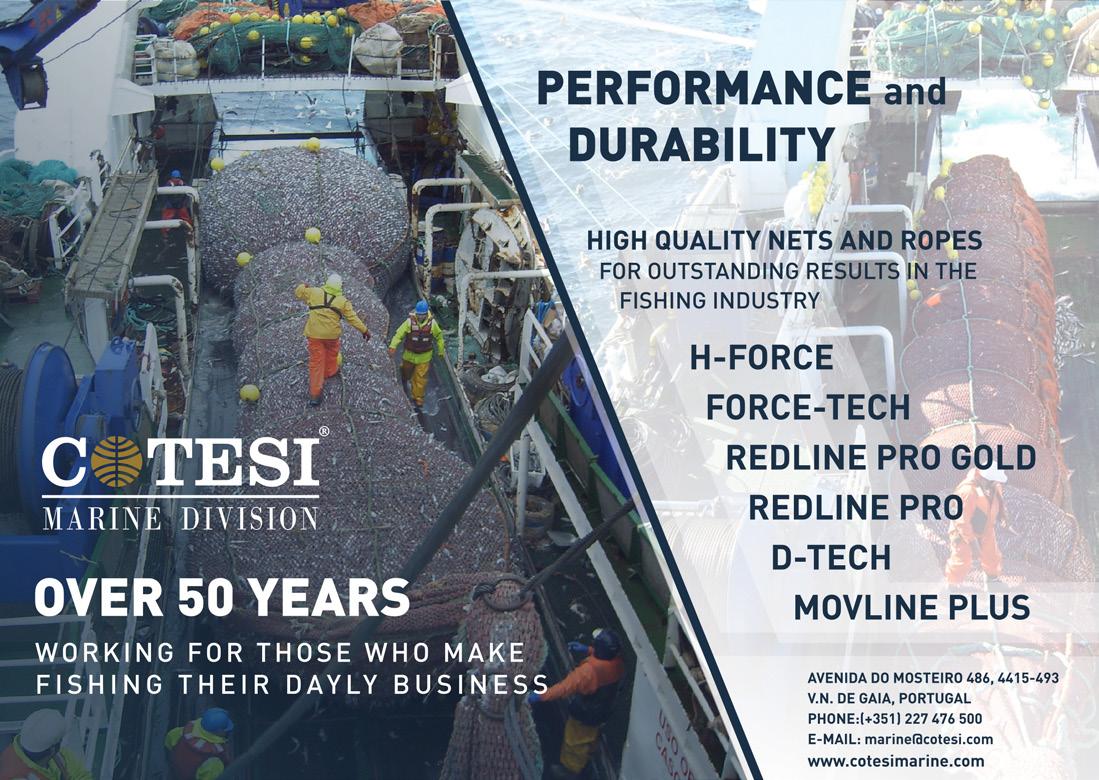
Using GPS and echosounder, Olex creates seabed charts which display together with navigation charts.

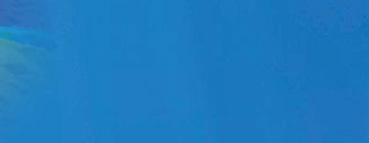










Scottish government has funded this latest study to build on the outcomes of the 2020 report and this includes a broad range of objectives addressed using qualitative and quantitative approaches. New data analyses were undertaken, and possible by-catch mitigation approaches have been explored by collating relevant information from the wider literature and through discourse with industry and other researchers working on seabird bycatch in similar fisheries.
The study (in six sections) uses data collected in the UK longline fishery between 2010 and 2021 and explores what factors may be linked to seabird bycatch rates in the fishery through statistical modelling approaches to try and identify when, where and in what circumstances seabird by-catch is most likely to occur in the fishery. An assessment of the spatial and temporal sampling coverage was also undertaken to explore the representativeness of existing sampling data.
It provides updated by-catch estimates for the longline fishery using additional observer data that has doubled the number of observed hauls since the estimates of the Northridge et al. report in 2020 and summarises detailed notes collected by the observer during data collection activities, and describes work carried out to gain a better understanding of by-catch in the fishery, and the drivers for

and willingness to address by-catch directly from skippers involved in the fishery.
In conclusion, it draws together the findings in a general discussion on the strengths and weaknesses of the data, highlights improvements in data collection/analysis and indicates some initial candidate mitigation measures for testing based on the literature review, existing sampling data and direct input from vessel skippers.
n Scottish government’s study seeks to explore the extent of seabird by-catch and possible solutions
With its larger longline systems now available in electric versions, Mustad Autoline is turning its attention to the longline setups it supplies coastal fisheries
“The first E-Line hauling system went through a very long trial period onboard Loran, and after eight months in daily operations making sure we could be confident that it was right. Ståle Dyb, the owner and skipper on board has been using it ever since,” said Mustad Autoline’s Gro Fjeld, commenting that quality is everything.
“We have customers who are fishing long trips, sometimes several months, and they are fishing a long way offshore. So providing support isn’t always easy and these systems can’t go wrong.”
So far there are six of these top-of-the-line longline installations in use on board large freezer longliners, with more on the way, and Mustad is now working to respond to the demand from coastal vessels for an electric option.
The focus is on the more manual HandyMag system which works with smaller, loose magazines, and the higher-capacity Coastal Autoline system – both of which operate with the same precision baiter.
“We have a very positive experience of developing the systems for larger vessels and we can make full use of that acquired knowledge in adapting electrical autoline gear for the coastal sector,” she said.
“It all depends on the development process, and the test results but we intend to launch components for the E-Line system for coastal fisheries at NorFishing 2024.”
Apart from the initial advantages of moving away from hydraulics, such as doing away with fluids that have the potential to spill and pollute, an electric longline setup
typically has a lower energy requirement, resulting in a reduction in fuel consumption.
It doesn’t do any harm that an electric system is easier to install in terms of both time and space.
“What makes a big difference is the amount of data collected. An electric setup with PLC based control system offers opportunities for a much more accurate and precise collection of data with live monitoring of temperature, vibration, and more. Predictive maintenance based on accumulated data and if necessary, live data connected direct to our service team for support,” Fjeld said.
Because of the massive collection and processing of data the electric Autoline hauler is more sensitive to heave, so the tension on the line remains more constant.
n Norwegian longliner Vonar was among the first to start fishing with a fully-electric longline system. Mustad plans to extend its rollout of electrical systems to the coastal fleet, starting next year
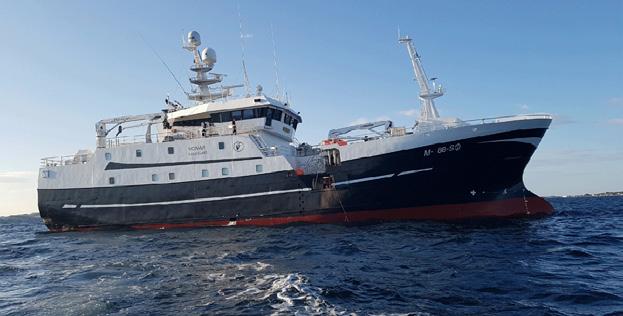
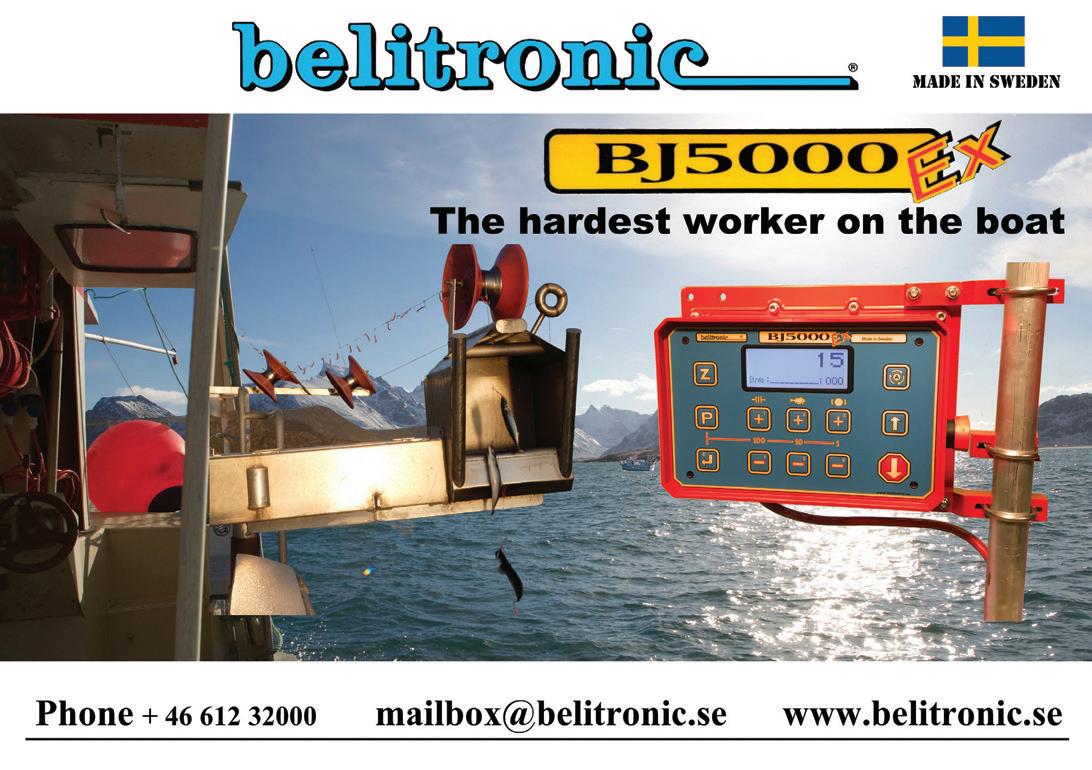








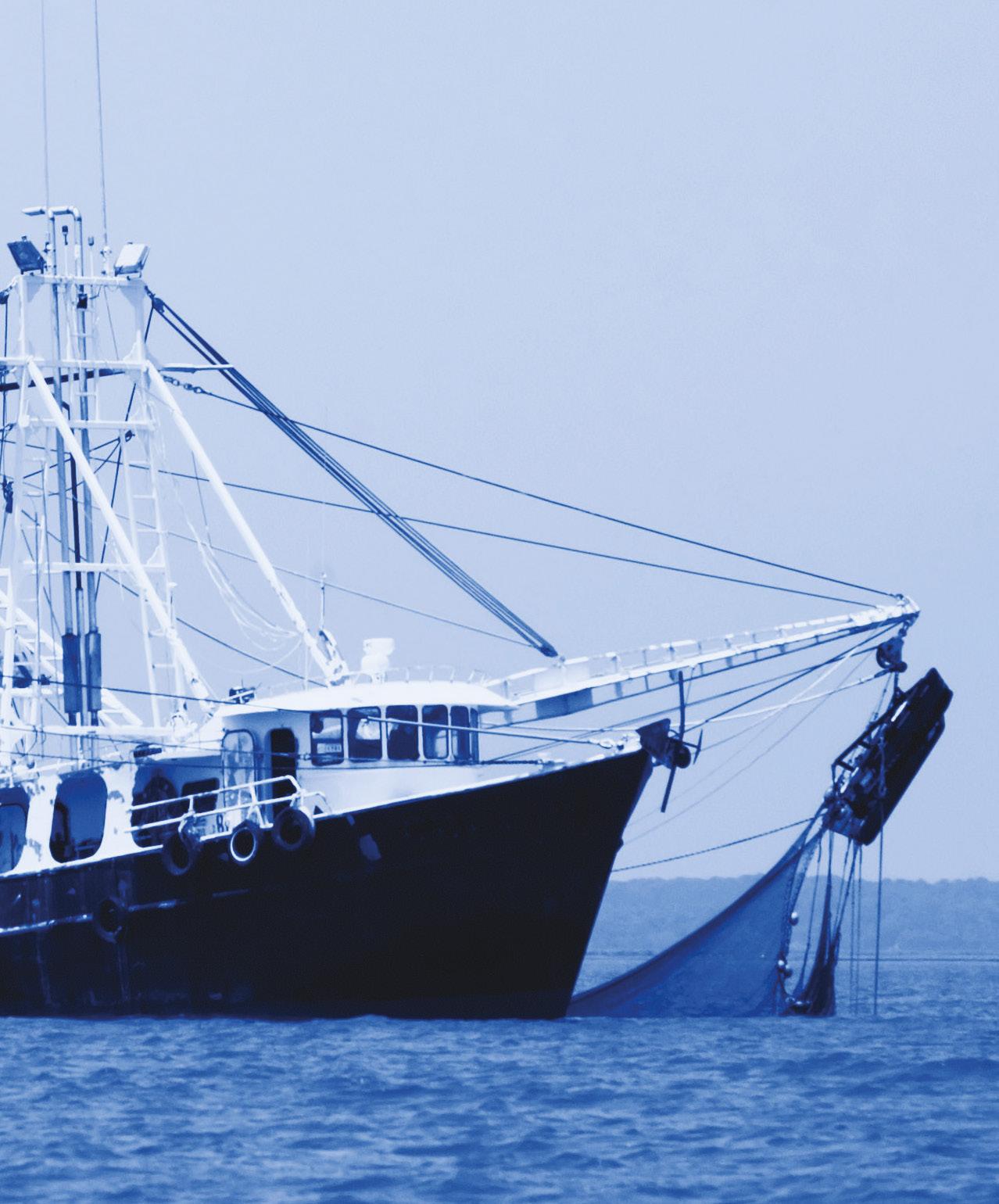




Stig Martin Fiskå, Global Head of Cognizant Ocean, explains how end-to-end smart platforms could help revolutionise the aquaculture value chain. Jason Holland reports

Improving the sustainability, efficiency, productivity and growth of players in the blue food space, particularly in the aquaculture sector, through the application of digital technologies such as AI and data analytics is at the heart of Cognizant Ocean, explained the new business group’s global head, Stig Martin Fiskå.
Global IT services company Cognizant unveiled Oslobased Cognizant Ocean earlier this year. Focused on the blue economy and with an international team sitting across Europe and North America, it has four central areas of interest: blue carbon – to decarbonise the oceans and reduce greenhouse gas emissions; blue energy and the harnessing of renewable ocean power; blue transport –with the aim to develop efficient and sustainable transport solutions for maritime and coastal activities; and blue food – promoting sustainable and responsible practices in aquaculture and marine food production.
Aligned with Cognizant Ocean’s launch is a new partnership with Tidal, a project inside X, Alphabet’s Moonshot Factory, which will make Tidal’s ocean information platform much more widely available, starting with the farming of aquatic foods.
“It’s all about creating healthy and sustainable oceans and growing the blue economy while doing that,” Fiskå told WF. “For most people, there’s no longer any doubt that improving sustainability requires the creation of more
efficiency and also leverage economic advantages. But that doesn’t mean it’s easy or straightforward to do. That’s the key thing for us; we want to take advantage of the economic goal levers that actually lead to change and operationalise sustainability. That’s what we are all about.” Striking a balance between sustainability and growth is crucial, he insists.
“We are looking to lower the cost per kilo to produce more finfish, but this cannot be a cost on sustainability. We need improvements in both. So, what we’re audaciously saying is that we want to help grow more fish to feed the world sustainably; and what motivates us is being able to do that while knowing for sure know what the costs will be. We know how important fish can be and we want it to be utilised more and better – helping everyone.”
n Within its blue food interest area, Cognizant Ocean is focused on establishing sustainable and responsible practices in aquaculture and marine food production
We know how important fish can be and we want it to be utilised more and better –helping everyone
Stig Martin Fiskå, Cognizant Ocean
lower pressure




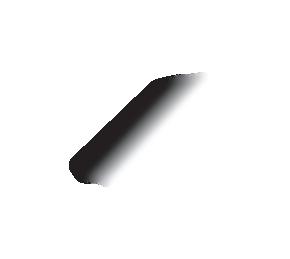
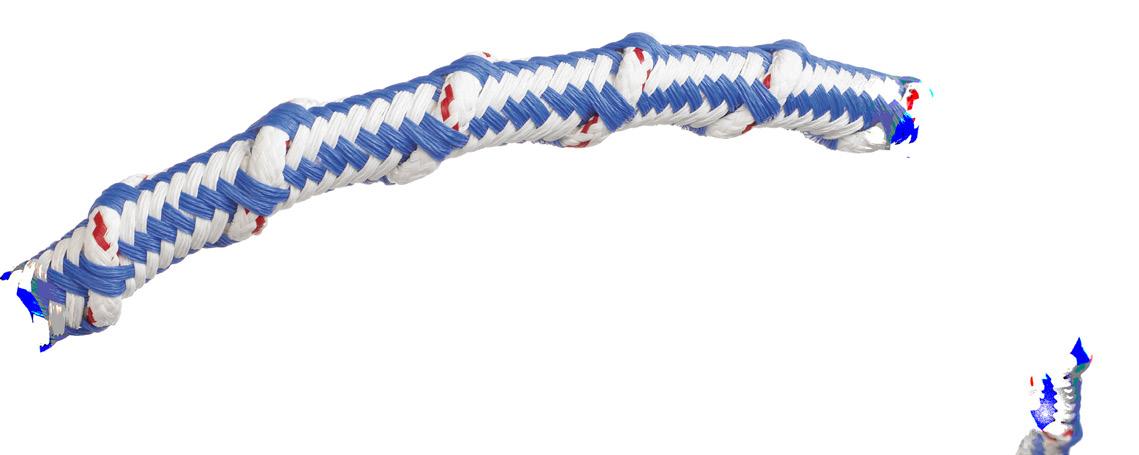

11 13 TO JUNE 202 4 Southampton United Kingdom

Marine Civils is open for business all year

Marine Civils is Europe’s leading event dedicated to showcasing the latest equipment and solutions for marine, coastal and other challenging civil engineering projects with unique landscape features.

Reach a larger audience than ever before Reserve now for 2024 and make the most of year round marketing support from Marine Civils, Seawork and our leading commercial marine magazines. In print, online, eNews and social media channels.
Marine Civils attracts representatives from:
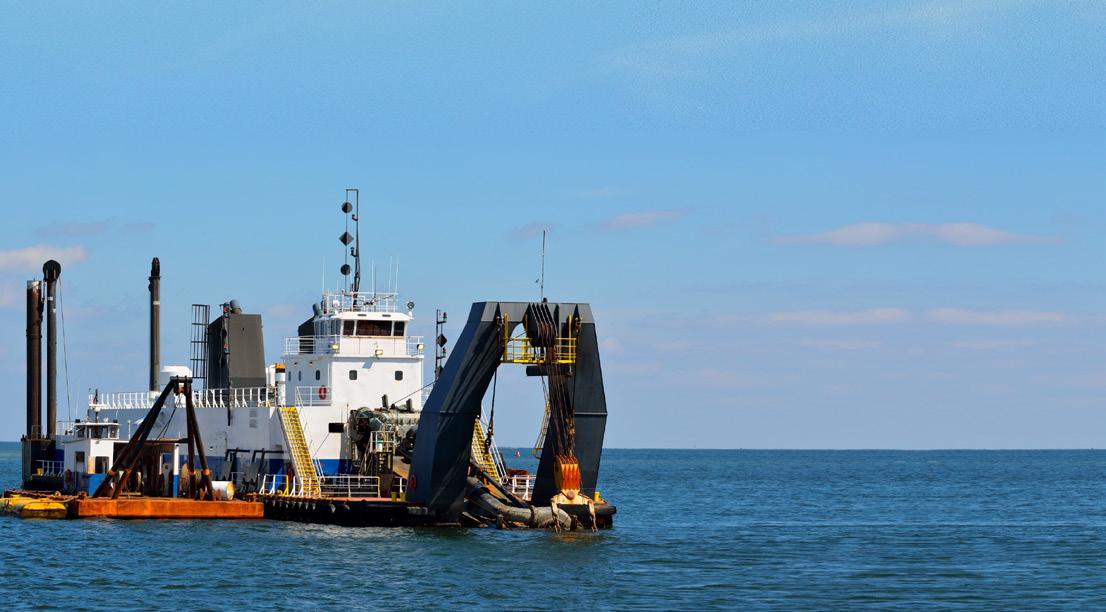

• Civil engineering
• UK port authorities
• Energy companies
• Conservation organisations, amongst others With a big overlap in content and business for companies involved in marine construction, the event is uniquely positioned to provide invaluable opportunities to access wider relevant audiences via Seawork and Maritime Journal.
Supporters
According to Fiskå, Tidal’s AI-built and tested platform can, amongst other things, incorporate AI and perception technology to track fish behaviour to better understand fish and help farmers gauge when they are hungry to increase feeding precision. This will help reduce the amount of carbon released by uneaten food. Additionally, farmers will be able to utilise data on environmental, biological and market conditions to optimise their business strategies.
“It’s a mature product that has already been commercialised and is in successful use today. In my opinion, it has the potential to totally digitalise and change the way the whole aquaculture industry is run,” he said.
“We’ve observed that this industry has been looking for solutions in this area – looking for a wholesome way of doing an end-to-end value chain, but perhaps it’s not been finding the best and most integrated solutions in the fish pens, when it comes to data and trustworthy ways of measuring it. There are some other solutions available, but this one is, to my mind, capable of taking care of almost everything.”
which we have to and in a sustainable way to maintain our growing global population, then these things matter a lot. I think we can definitely play a role as an integrator in the true sense (not just in a technical sense).”
As well as having something that brings all value chain elements together to talk and inform one another, there’s a strong need from the industry to have a platform in place that has “longevity and muscle”, Fiskå said.
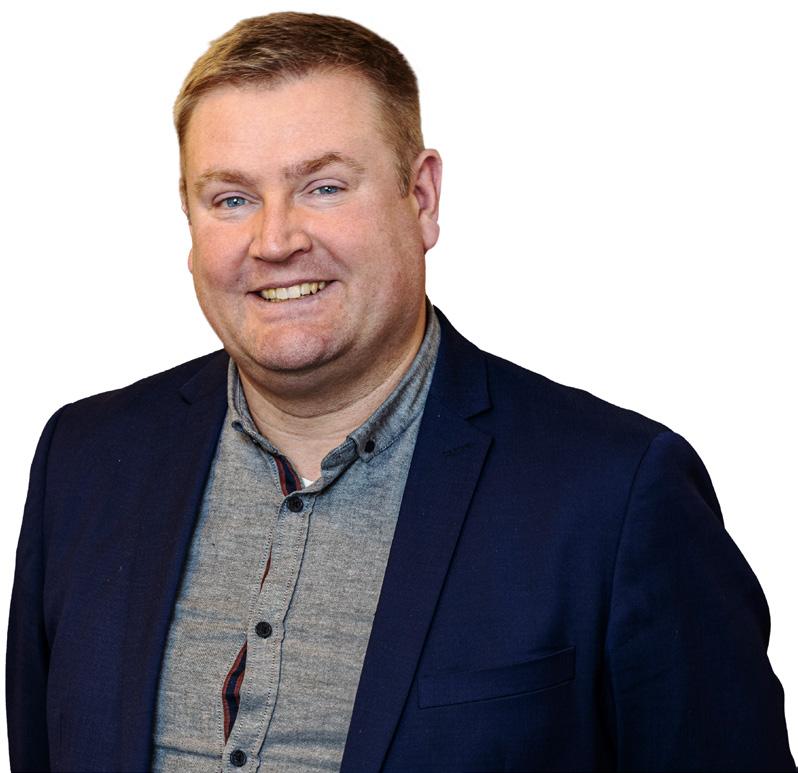
“There are some systems that’ve been around for a long time, and which might not be up to the task when it comes to the data that’s now flowing and the updates that are coming on a regular basis. We’re also seeing more requests along the lines of, ‘how do I go from smolt into saltwater and the production of that? How do I trace that? How do I better optimise my feed so I get my costs and my CO2 footprint down? And how do I integrate that with automation around fleet management – to clean, handle or process the fish? How do I do that with the right growth curve so I hit my market correctly etc?’”
He added that the demand side of the value chain is also becoming increasing interested in these same aspects.
“They’re also looking for a different future – a more measured and automated way and a more secure supply chain. If they want to sell to their end customers, they need to know when fish is coming and how much, its size and weight, and that it’s sustainably sourced.
“Today, all of us are using Teams, Google etc and I think we expect that’s possible in the aquaculture value chain. But in heavy asset industries, that’s not always the case; it hasn’t got here yet. And I think that’s what we are about to see – a small but significant revolution.”
One of the things that sets the Cognizant Ocean/Tidal offering apart is the combination of excellent software and hardware, reckons Fiskå.
“There are a lot of companies that are either good on hardware or good on software, and then you have the Teslas and Apples of this world – companies that fuse the two. I think the legacy of Google in this instance [X was formerly Google X] is exactly where they come from; they have really, really powerful software and then they have added on really good people focused on hardware too. There’s a balance, with the two sides working together to create something new that’s beyond other solutions.
“For us – at Cognizant Ocean – it’s about the opportunity this gives us to have an end-to-end value chain – integrating the data to optimise it and make it a business-oriented platform. That’s where we see its value,” he said.
Establishing a connected value chain with discussions and partnerships spanning the larger ecosystem is also key and an ethos shared by Cognizant Ocean and Tidal. Indeed, Fiskå believes the TidalCognizant collaboration could be the start of a more integrated way of thinking.
Another differentiator is the two have the muscle to come up with industrial-grade solutions, he said.
“There’s been lots of good start-ups and also spins-offs from existing industry giants, but having that software and hardware from a bigger background and having access to a very large pool of talents does make a difference. As does global reach. Transformation requires a more global way of thinking, and if we are going to be able to produce more fish,
Fiskå added that while there are a lot of positives for the industry, to a certain degree it’s still “finding its feet” when it comes to transitioning from a procurement mindset and buying things into an investment mindset where investments are made to change the operational model.
While there’s still some weighty resistance to sharing data, Fiskå maintains that mindsets are changing and there’s a growing appreciation that industrialising a suite through a platform that’s released to a bigger market can speed up its sustainability, efficiency and increase production. There are also heavy costs associated with maintaining custom products and software.
In my opinion, it has the potential to totally digitalise and change the way the whole aquaculture industry is run
Stig Martin Fiskå, Cognizant Ocean
“There’s an appreciation that we’re coming with something that’s clear, which fosters partnerships specific to their industry,” Fiskå said. There are those that understand data is something that you have to utilise and share to be able to do something to get the gold out of it and that it doesn’t really create value by itself. It’s only when you connect it with other data, insights and automation that you see the gains. There are some CEOs and frontrunners that understand that.
“Of course, there’s some scepticism to big giants joining the party too. Typically, we’re asked, ‘will you be dominant? Are you looking to lock in contracts with industry? Who owns the data etc?’ But those are questions which we have clear, mature answers to; ones that the digital sector has faced from other industries for a long time.”
Salmon farming giant Mowi is among those already utilising the platform, specifically at around 700 installations around the Norwegian coast, with more set to come on stream in due course.
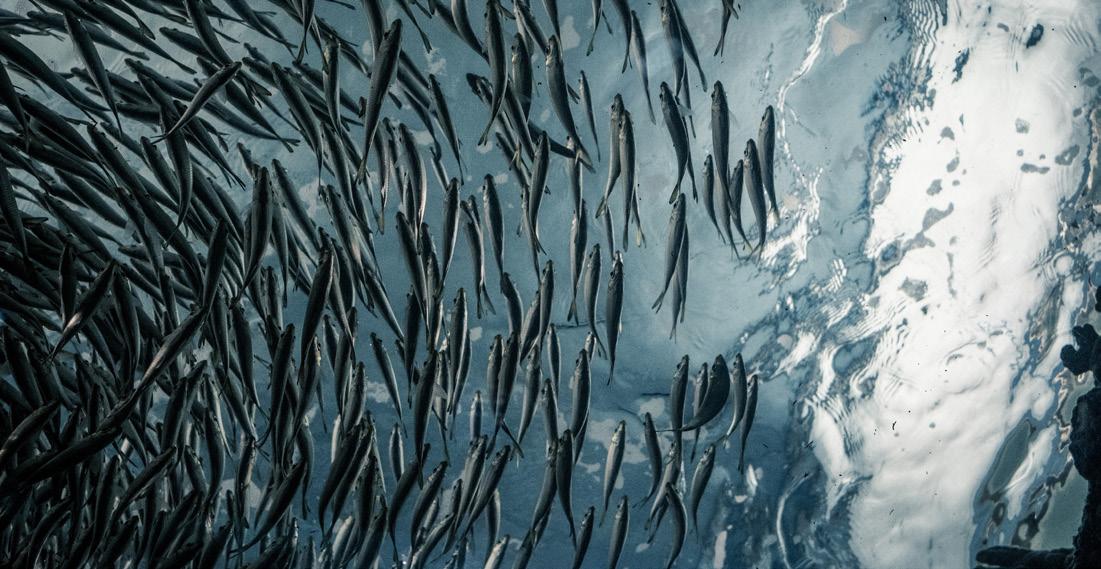
“Those have been operational for a while and they are producing very good results,” Fiskå said. “Then we have ongoing conversations and are running trials with other salmon producers, together with some very early conversations in other areas and for other species.” Cognizant Ocean is also working with organisations like the NCE Seafood Innovation in Norway, and through such relationships it is pre-competitively sharing information and participating in open research.
“Perhaps it’s hard for the industry to accept that a change is coming, even though I’m pretty sure the technology they’ll be utilising is already here. I also feel that most players have been talking about a ‘golden vision of egg-to-consumer connectivity’ happening for the past five or 10 years. My feeling is that with the technology there, it’s now mindsets that need to change, where we have an industry that’s looking to partner up and one that also understands you’re not going to own the solution all by yourself,” Fiskå said.
Moving forward, Fiskå’s immediate hope within Cognizant Ocean’s blue food focus is there’ll be more people rolling out the platform and utilising its data, and then naturally moving into collaborations and partnerships that create a
more holistic end-to-end value chain and ecosystem, and that more products reach the market as a result.
“That’s the immediate vision we have and a lot of it is already in place either conceptually or technically. It’s clear industry wants this and for it to be part of a full value chain, but perhaps it hasn’t yet seen a clear pathway to achieving it,” Fiskå said.
“But Cognizant has done this time and again in other industries. From a technology perspective, it’s not really new. Finance has done this for a long time – taking care of data quality, security etc, while manufacturing has also come quite far. With aquaculture, I think it’s more about filling the knowledge gap of what’s possible. Then it’s about having trust – to jump into partnerships with both feet. That’s when they will learn pretty quickly what’s possible,” he said.
As for Cognizant Ocean’s work outside aquaculture, within its blue food focus area, it’s seeing growing interest for platform solutions from both the wild-fishery and bycatch sectors. Additionally, and while it doesn’t yet have a commercialised product ready, there’s momentum building in the field of blue transportation, predominantly with ocean shipping. Similarly, early conceptual discussions are ongoing with regards to renewable blue energy, with Fiskå anticipating seeing some pick-ups in 2024.
He added that another emerging area – one with “a very natural overlap” – is concentrated on sustaining biodiversity in rivers, lakes and shores going into the ocean. Cognizant Ocean calls this “blue life”, and Fiskå explained that it’s something that is requested a lot because of the knowledge that the group has built up, together with its perception and measurement capabilities.
n Aquaculture is looking to establish a truly end-toend value chain, maintains Cognizant Ocean
Perhaps it’s hard for the industry to accept that a change is coming, even though I’m pretty sure the technology they’ll be utilising is already here
Stig Martin Fiskå, Cognizant OceanPhoto Credit: Cognizant Ocean
18 20 TO Smárinn Kópavogur Iceland 2024

We look forward to welcoming you in 2024
The Icelandic Fisheries Exhibition covers every aspect of the commercial fishing industry from locating, catching, processing and packaging, right through to the marketing and distribution of the end product.

Visit: Icefish.is Contact: +44 1329 825 335 or Email: info@icefish.is
Organised by:
For more information about exhibiting, visiting or sponsoring, contact the events team #Icefish

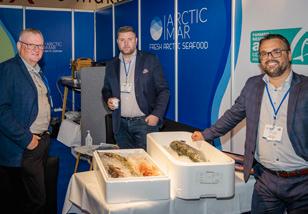


• Keynote Address: Iceland’s Use of Captured Seafood By-Products
Jonas R. Vidarsson, Director of division of value creation, Matís
• Keynote Address: What role may byproducts play in the future of marine ingredients?
Petter Johannessen, Director General, IFFO
• Innovative Technology unleashing fish waste value potential

Wenche Uksnay, Cluster Manager, NCE Blue Legasea
• Co-Product Valorization – Towards an industrial Implementation of innovative Food Processing Concepts to achieve 100% Utilization
Dennis Lohmann, Head of Technology Management, BAADER & Dr Pia Meinlschmidt, Product Manager Fish, Food Science & Technology, BAADER
• The Journey to 100% Utilisation
Erla Ósk Pétursdóttir, Managing, Director, Marine Collagen ehf
• N-Atlantic pelagic fish oils originated from Herring and Mackerel - The new exciting Natural fish oil source in times shortage

Snorri Hreggvi Osson, CEO, Margildi
Please note: recordings of the sessions are also available
To make your purchase, or download the papers visit: icefishconference.com contact: +44 1329 825335 or email: info@icefishconference.com #FishWasteForProfit
Operated by:
Media Partner:
Norwegian-based maritime system supplier Brunvoll has secured a contract with Fitjar Mekaniske Verksted AS (FMV) for the delivery of a propulsion and manoeuvring package for a new stun and bleed vessel, being built for FSV Group
FSV’s 50-metre-long newbuild is designed in corporation between Sirius Design & Integration and Fitjar Mekaniske Verksted AS, who are also building the vessel.
The vessel will be fitted with a twin-screw configuration, featuring controllable pitch shaft lines propellers and reduction gears with electrical motors for propulsion. It will also be equipped with two tunnel thrusters, one forward and one aft, for manoeuvring.
FSV selected the twin-screw configuration in combination with the two tunnel thrusters to meet the operational requirements of the vessel. The vessel has been designed to operate in shallow waters with strong currents and is based on the Aurora series, developed by Sirius Design & Integration and FMV.

The vessel will also be constructed by FMV in Fitjar, Norway.
“We chose Brunvoll for this vessel because they have proven their ability to deliver top-of- the-range products along with a large global service network. This is a new market for us, and we will also be operating the vessel globally. An added bonus for us is that Brunvoll develops and produces these world-class products in our neighbourhood,” FSV Group CEO Arild Aasmyr said.
FSV is a Norwegian service provider mainly within the aquaculture industry and operates a large fleet of multifunctional vessels, including vessels for towing, ROV inspection, salmon lice treatment and more.
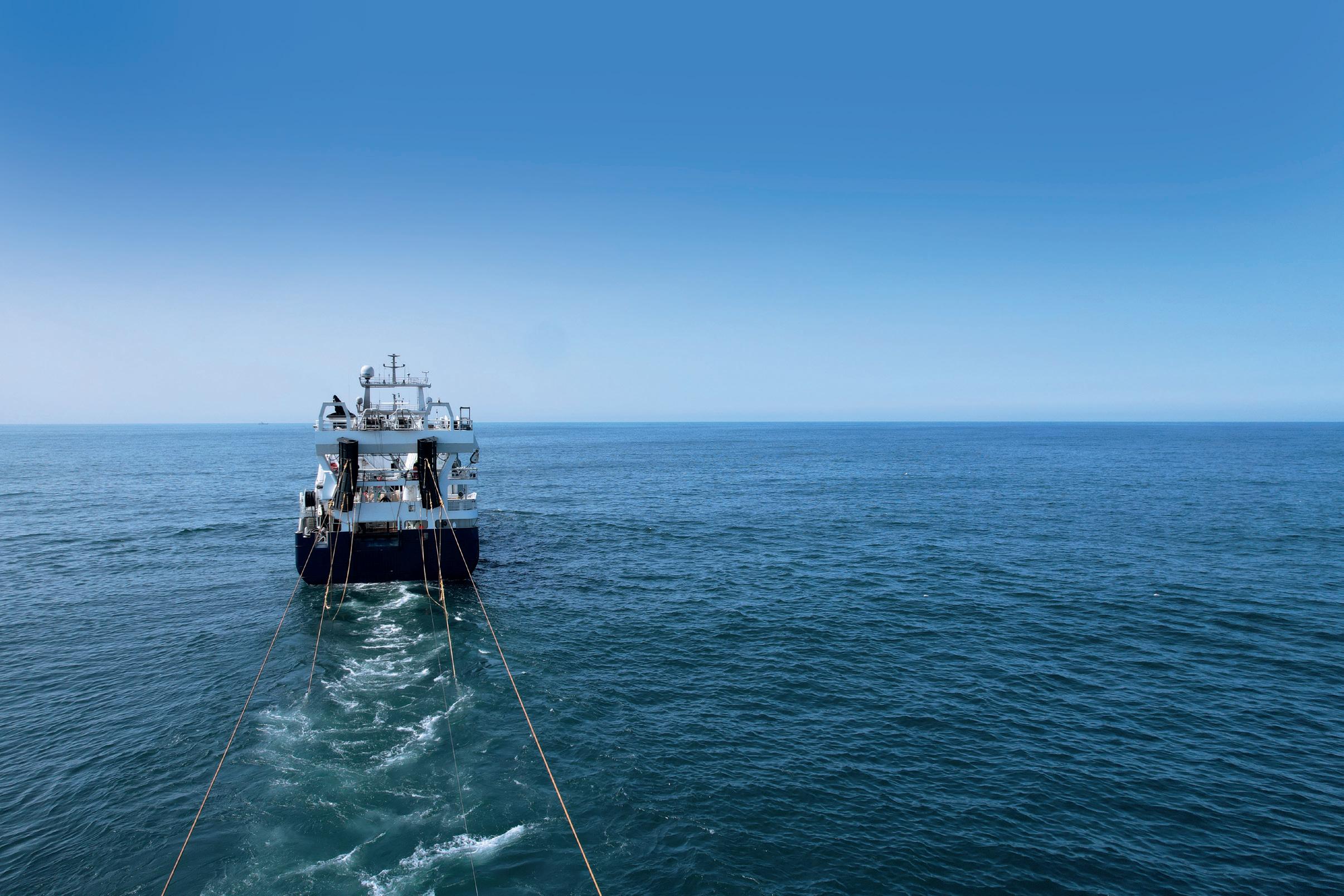
The US Food and Drug Administration (FDA) has signed a Regulatory Partnership Arrangement (RPA) with Ecuador’s seafood regulatory authority to enhance the safety of shrimp imported to the United States
The first-of-its-kind RPA serves as an arrangement between the FDA and the Vice Ministry of Aquaculture and Fisheries (VMAF) to work more closely to reinforce food safety practices along the entire supply chain. Such arrangements aim to leverage commodity-specific oversight systems – in this case, imported farmed shrimp – along with data and information, to strengthen food safety before and at the port of entry.
In remarks during the signing ceremony on 24 August 2023, Don Prater, Acting Director of the FDA’s Center for Food Safety and Applied Nutrition (CFSAN), described the RPA as the “culmination of a lot of work and relationshipbuilding between both of our agencies”.
To prepare for the RPA, the FDA and VMAF signed a confidentiality commitment (CC) in August 2022 that allows for the exchange of confidential information, including inspection records, sample findings and other non-public documents. In addition, the FDA conducted a rigorous assessment of Ecuador’s farmed seafood safety system and examined important parts of VMAF’s programmes and capabilities.
The FDA found that Ecuador’s food safety controls for shrimp is science-based; is comprised of the basic food safety system key elements; has ongoing processes to ensure the sustainability of preventive controls; provides competent oversight throughout the supply chain; and has a public health focus.
Through this assessment, the FDA became confident that Ecuador has key components of a food safety oversight system for shrimp and shrimp products intended for export to the United States.
largest shrimp exporting countries by volume. Ecuador is one of those countries.
“Ecuador may be a small country, but it is an important supplier of food to the United States, especially of seafood,” FDA Latin America Office Acting Director Michelle Rodriguez said at the signing ceremony. “To achieve our joint food safety goals, collaboration and information sharing is essential.”
The new RPA with Ecuador sets forth how the FDA and VMAF intend to collaborate with one another to:
n Share information on best practices, food safety policies and regulatory approaches to address the safety of shrimp
n Ensure prompt notification and response to adverse food safety events such as illnesses, recalls and outbreaks
n Ecuador is a major exporter of shrimp and shrimp products to the United States
The FDA will be able to leverage data and information from Ecuador for the FDA’s regulatory decision making, while Ecuador will leverage data analytics from the FDA to inform their regulatory activities.
Since 94% of the seafood consumed by volume in the United States is imported, one of the agency’s tasks has been to ensure that imported seafood is held to the same food safety requirements as food produced domestically. In the past, that’s primarily meant intercepting unsafe food at the border and preventing its entrance in the US marketplace.
In 2021, US Congress highlighted the importance of food safety related to shrimp – the most popular seafood in the United States – by mandating that the FDA consider and develop new options for enhancing the regulation of imported farmed shrimp, including an RPA with the three
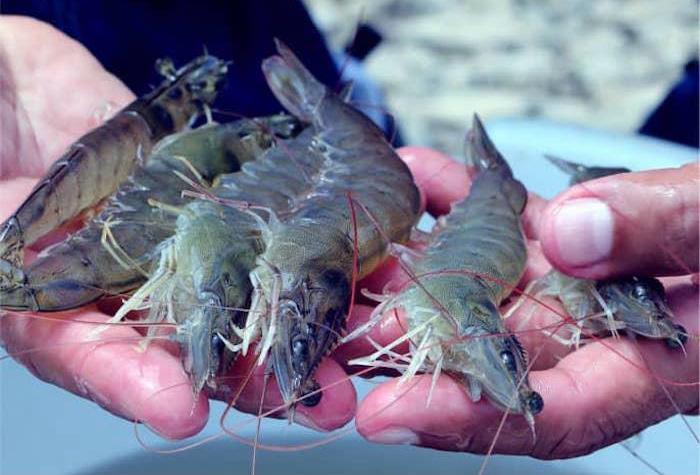
n Promote and conduct training, including FDA Import Operations, Basic HACCP, Train-the-Trainer HACCP, Good Aquaculture Practices, Good Fishing Vessel Practices, and seafood decomposition detection
n Participate in shrimp inspections, audits and investigations
The FDA is already sharing information with VMAF as a result of the 2022 CC, including import refusals, compliance actions, outbreak investigation information, and detailed sampling results. In response, VMAF has provided the FDA with information on Ecuador’s regulatory follow up to these events.
“This free flow of information yielded important food safety benefits for consumers in both of our countries, while demonstrating the trust we place in the Vice Ministry,” Rodriguez said.
FDA Associate Commissioner Mark Abdoo signed the RPA on behalf of the FDA while Vice Minister Andrés Ahrens signed the arrangement for VMAF.
Ecuador may be a small country, but it is an important supplier of food to the United States, especially of seafood
Michelle Rodriguez, FDA
Land-based aquaculture company Andfjord Salmon is rapidly advancing with the expansion of its facility at Kvalnes, Andøya, Norway, with the company reporting that the summer months saw successful preparatory efforts and the deployment of personnel and equipment to set the stage for the next phase of construction
In mid-June, Andfjord Salmon unveiled the specifics of its expansion plan at Kvalnes, targeting a total production capacity of 40,000 tonnes (HOG) through a gradual increase between 2025 and 2030. An initial volume of 8,000 tonnes (HOG) is anticipated for 2025.


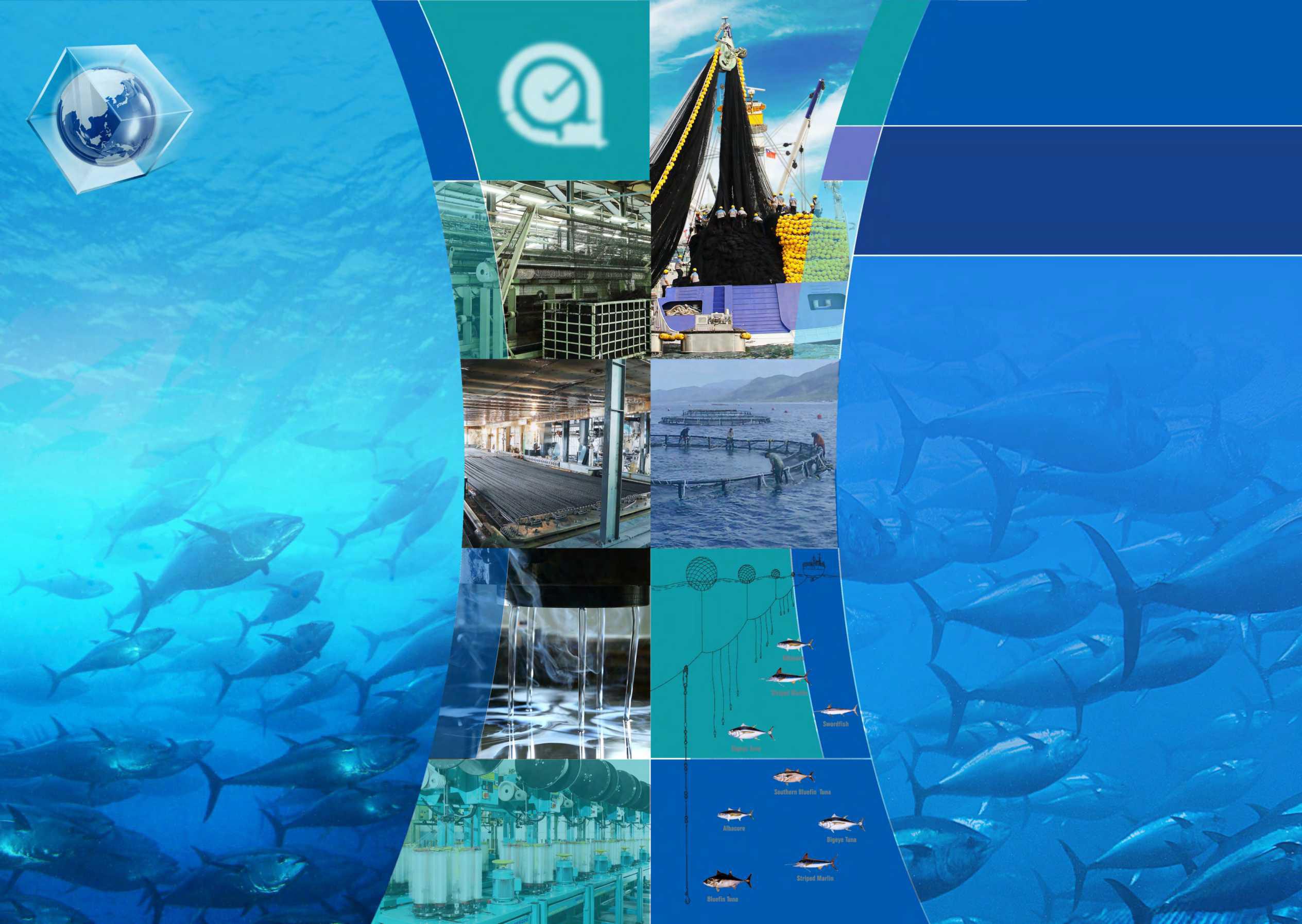
The company has confirmed that contractors have done extensive groundwork spanning several hundred metres, with the work involving injecting concrete to stabilise the sections surrounding the 12 pools that constitute the upcoming construction phase at Kvalnes. This preparatory work should
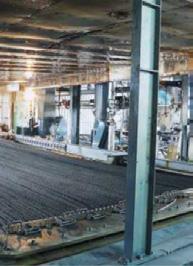
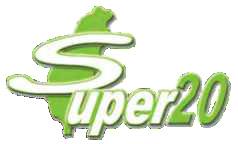

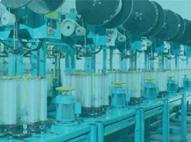





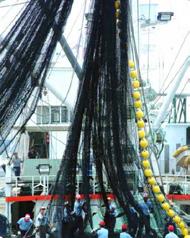
























Beck Pack Systems A/S




DK-3700, Roenne, Denmark

Tel: +45 56 95 25 22 info@beck-liner.com

Beck Pack Systems, Inc. Seattle, WA, USA
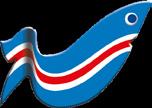




Tel: +1 425 222 9515
The


ISO-9001, ISO-22000, FSSC 22000 certified manufacturer and supplier of block liners, folding cartons, and freezer frames for the international food processing industry. To find the agent in your region visit: www.beck-liner.com

Metallurgica Abruzzese S.p.a. Strada della Repubblica, 58 43121 Parma – Italy
Tel: +39 0521 221411
Fax: +39 0521 221449
email: a.contini@cavatorta.it web: www.cavatorta.it/EN
Cavatorta Group is a dynamic European manufacturer that specializes in the production of galvanized and PVC coated multifunctional wire mesh products. Our SEAPLAX marine mesh uses include lobster and crab traps, oyser trays, aquaculture and general marine applications.
Fishing Gear
Riveira – A Coruña – Spain
Tel.: +34 981 87 60 08 Tel.: +34 686 930 025
Fax: +34 981 87 43 48
Email: correo@apoutada.com
Website: www.apoutada.com

Manufacturer of fishing hooks since 1985. Steels and internationally proven designs and best warranty.


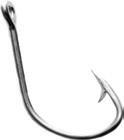
Specialized supplier of a wide range of material for longline fleet.
ASANO is a supplier and manufacturer of high-quality stainless steel fishing gears sales@asano-global.com

https://asano-global.com/
ALL STAINLESS STEEL PRODUCTS DESIGNED IN JAPAN
Rua da Cerfil (Cap. Gramaxo)
P.O. Box 1029, 4471-909 Maia
PORTUGAL
Tel: +351 22 961 9200
Fax: +351 22 960 5757
Email: sales@lankhorsteuronete.com
www.euronete.com
Contact: Mafalda Gramaxo
Salvador Castro
Producer of the recognized brands:
Netting: Euroline®, Eurocross®,

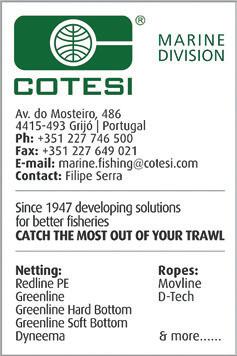

Premium®, Premium Plus, Lankoforce®
Wire Ropes: Eurowire® and Europact®
Fibre Ropes: Lankoforce®, Eurosteel®, Tipto® Super 12 net twines.
Recently Launched!
Euroline Tipto® / Eurostone®
Founded in 1927, Sounete focuses its activity on the design and manufacture of hardware for trawling/ industrial fishing: steel and rubber bobbins, rubber spacers, trawl doors, blocks, swivels, large size thimbles, shackles, and other metal gear, including customized models SOUNETE INTERNACIONAL, S.A. Rua da Seara 588, 4430-291 Vila Nova de Gaia, PORTUGAL

Sales: André Pinho Phone: +351 227 860 930 GSM: +351 917 207 052
Email: andre.pinho@sounete.pt www.sounete.pt
1-2 Shing Nung Road, Tungkang, Pingtung,Taiwan
Tel: 886-8-8331100~9
Fax: 886-8-8327022
E-mail: export@chingfa.com.tw
Website: www.chingfa.com.tw
Specialized manufacturer & exporter of: Hi-tech 7 tuna purse seine nets, Super 20 aquaculture knotless nets (Raschel type), nylon longline & its spare parts, nylon fishing line, nylon mono & multi-mono nets, nylon twisted and braided nets, PE trawl nets, ropes, twines, floats and etc.
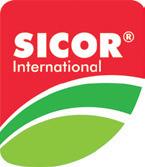
Gore Cross Business Park
Bridport
Dorset DT6 3UX
Tel: 01308 428 224
Fax: 01308 428 228
Email: sales@sicor-int.com
Website: www.sicor-int.com
Contact: Toby Eeles
Unit 3
LIMITED
Murcar Trading Estate, Denmore Road, Bridge of Don Aberdeen, Scotland, United Kingdom
Tel: 01224 707560
Fax: 01224 707561
Email: aberdeen@sicor-int.com
Contact: Gary Mitchell
Manufacturers of all types of fishing ropes, netting and twines including poly steel ropes and compact netting.

The Crosby Group is the world’s leading manufacturer of rigging, lifting, and material handling hardware. With a global network of more than 3,000 authorized distributors and unmatched local support, Crosby sets the standard for quality, training, and technical expertise in the eld.
www.thecrosbygroup.com
Fishmeal Plants
VMK pelagic processing solutons combines high performance machines with small square meter usage and cost e.cient maintenance.
VMK solutions combines high performance small meter usage and cost efficient maintenance.
Fornandergatan 1, 392 33 Kalmar, SWEDEN +46 (0) 480 945 00 vmk@arenco.com
Fornandergatan 1, 392 33 Kalmar, SWEDEN +46 (0) 480 945 12 vmk@arenco.com www.vmkfish.com
Fish Processing Machines - FPM - for smaller fish

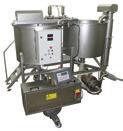



SEAC FPM-400 Nobbing and Filleting machine now also with Automatic Feeder
SEAC AB Industrigatan 8 386 32 ISLAND OF ÖLAND SWEDEN +4648535200 +46704391454 info@seac.se
Since 1958, FAIVRE Group designs, manufactures and commercializes high quality machines for the aquaculture industry.


Today, Faivre goes further and offers its know-how to the fishing industry! www.faivregroup.com


MARELEC Food Technologies designs and manufactures hightech portioning, weighing, grading and control systems for the fishing and food industry.
Trusted solutions for 40 years
Advanced raw material usage

Supplying the fish and seafood industry for decades

Cabinplant’s solutions for the fish and seafood industry include solutions for reception of raw material, sorting, grading, cleaning, filleting, cooking, cooling, weighing and packing.
www.cabinplant.com
FREEZE SMARTER, FREEZE BETTTER WITH
Cochin Food Tech Pvt Ltd (India) sales@cftech.in www.cftech.in
Langerbruggekaai 15
9000 • Gent • Belgium
Tel: +32 9 376 95 95
Fax: +32 9 376 95 96
info@cretel.com www.cretel.com
Cretel is manufacturing in Belgium
FISH SKINNERS FISH SCALERS

VACUUM PACKAGING MACHINES

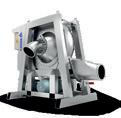
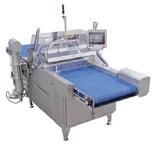

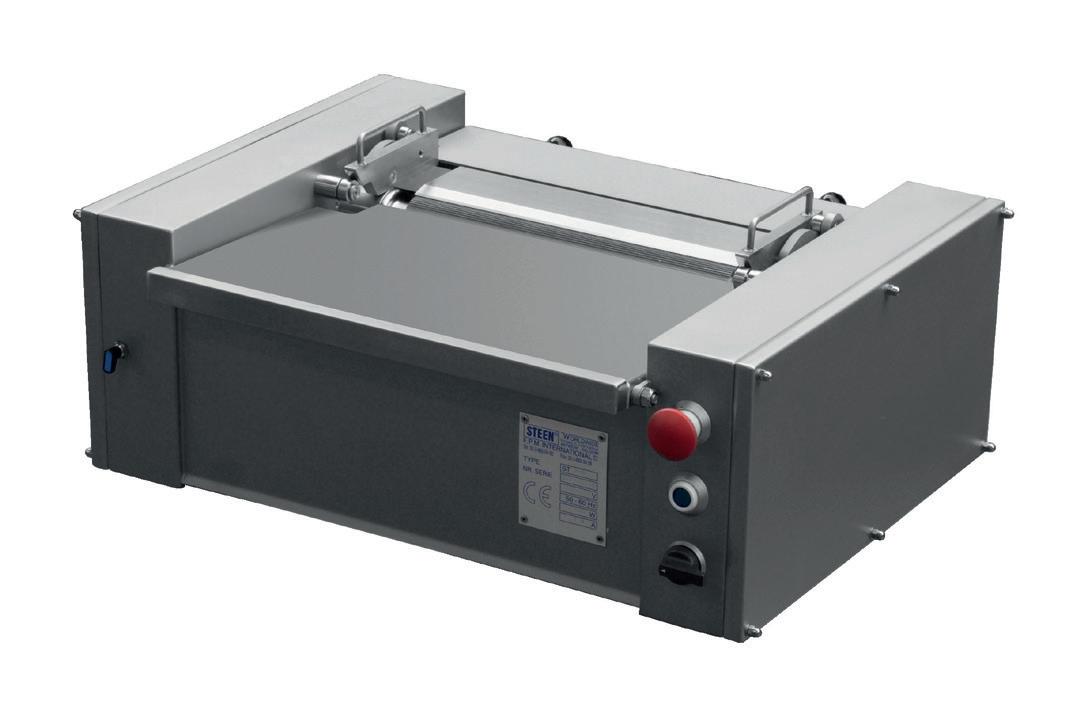
INDUSTRIAL WASHING AND DRYING EQUIPMENT





Consult us and take advantage of our worldwide experience and expertise.
Kroma A/S
RÆVEVEJ 22 - DK-7800 SKIVE
Phone: +45 9752 2099
Fax: +45 9752 0572
Web: www.kroma.dk

E-mail: kroma@kroma.dk

Kroma A/S is a supplier of high quality de-scaling, gutting and filleting machines for all kind of fish species. Specialist in handling of roe, and filleting of soft fish species like mackerel.
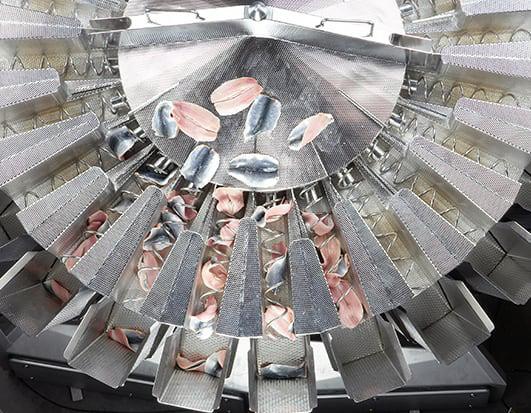


www.marelec.com

Increases yield natural way
Low pressure injection
Adjustable injection levels
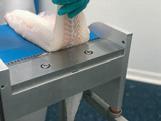
Packing yield increase
Increases yield natural way
Protein in Protein
Reduced drip
Lower cook and chill loss
No chemicals
Sale: +354 516 3000 traust@traust.is
www.traust.is
IRAS A/S
Gammelby Mollevej 3
DK-6700 Esbjerg, Denmark
Tel: +45 7611 4949
Email: iras@iras.dkWeb: www.iras.dk
IRAS is supplying the modern fishing and aquaculture industry with innovative solutions within: Pumping, Classification, Weighing, Ice handling, Storage, Transport

MARINE SOLUTIONS - Freezing and cooling systems, RSW cooling systems.

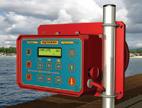
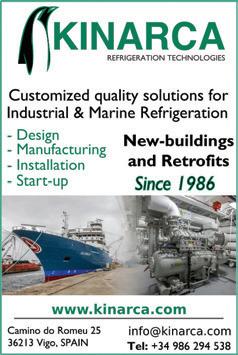
LAND BASED SOLUTIONS - Pelagic systems, Ground fish factories, Shrimp factories, Meat and Dairy systems.

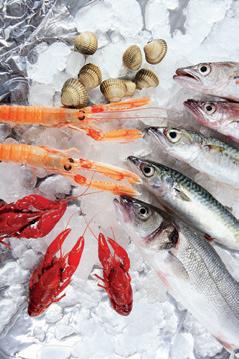
WE PROVIDE
• Energy savings
• Environmental friendly solutions
• Natural refrigerant’s
www.frost.is | frost@frost.is
Worldwide #1 in Ice Factories
Ice Plants for Fish and Seafood
Flake Ice & Plate Ice up to 100t / 24h Ice Storage with Automatic Rake System Systems for Ice Conveying and Weighing Built in a Container or on a Frame www.kti-plersch.com | info@kti-plersch.com
We have specialized in the development, construction, installation, service and maintenance of key components and technical solutions.
REAL-SNOW AS Filipstadveien 15, 0250 Oslo, NORWAY Phone: +47 9687 4080
E-mail: post@real-snow.com

BJ 5000Ex
BELITRONIC SWEDEN AB
Rattarevagen 7, S-872 63 Lunde, Sweden Tel: +46 6123 2000 mailbox@belitronic.se www.belitronic.se
Top of the line Jig fishing machine – BJ 5000Ex. Friendly, Flexible and Intelligent! Reliable, effective and recently improved Jig Fishing Machine, special programs on request. The BJ 5000Ex can reach fishing depth fast!
Serious Fishing Gear for Serious Fisherman
Fishing Net, Rope, Float, Crab Trap, Long Line Fishing.
Tel:++86 631 5306208 Fax:++86 631 5306209
Cell/Whatsapp:++86 138 0631 1778
E-mail: ericdu@dnsnetting.com www.fishingnetchina.com
World’s leading supplier of Fishing nets (our globally trusted brands are SNG, Sapphire and Olivene), assembled trawls, Purse Seines, Aquaculture cages and anti-predator nets for aquaculture industry, ropes for the fishing, aquaculture and shipping industry. Our products are exported to over 60 countries globally.

Garware Technical Fibres Plot No 11, Block D-1, MIDC, Chinchwad, Pune, India Web: www.garwarefibres.com
Tel: (+91)2027990381
Contact: Vivek Kumar
Email: vkumar@garwarefibres.com
Mobile: +917767802806
KING CHOU MARINE TECHNOLOGY CO., LTD.


NET MANUFACTURERS
We are a professional fish net maker and provide assembly & design service for various nets. We use Nylon, HDPE, PP, PE to make purse seine net, fish farming cage net for smolt, grower, growout, predator & anti-bird, trawl net, trap net, safety net, sports net, twine, float and steel wire. The making of fish nets can be twisted, braided, super-knot knotless or raschell knotless, mono or multi-mono filaments.

Website: www.king-net.com.tw
Email: sales@mail.king-net.com.tw
Main phone No. +886 7 535 2939
Fax No. +886 7 535 2938 23F-2, No.2 Chung Shang 2nd Road Kaohsiung City, Taiwan , Zip code: #806
Fishing nets, aquaculture nets, agriculture nets, sports nets, all types of ropes and twines.
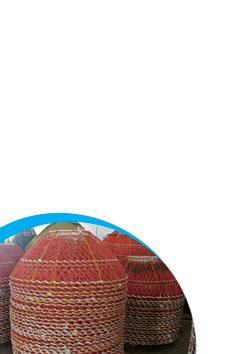
Forever Industries Co., Ltd.
No.88, Di An Truong Tre St., Di An Town, Binh Duong, Vietnam Tel: (+84) 916 225 068 (+84) 251 378 9125 sales@forevernetco.com www.forevernetco.com
Tel: +34 981 705722
Email: tucal@tucal.es www.tucal.es


Fortune Net Group of Companies No.42 Sto. Domingo Ave, Brgy. Matalahib, Quezon City, Metro Manila, Philippines Tel: 0063287125362, 0063287119238 Fax: 006387125351, 0063287110169


Email: export_fntgrp@yahoo.com melmorales_728@yahoo.com alextanfortune@yahoo.com
Contact person: Mel Morales, Alex Tan
Manufacturing plate freezers since 1989


Braided knotted nets; Twisted knotted nets; Raschel knotless nets; Monofilament double knots net; PE Shade nets. All types of twines and ropes, Specializing in: Tuna & Sandrine Nets; Purse Seiners; Mono and Multi gill nets; Nylon & HDPE Trawl nets; Aquaculture Fence & Cage nets; Safety and Sports nets; Ornamental nets.
Van Beelen Group bv +31(0)255 560 560 info@vanbeelengroup nl vanbeelengroup.nl
P E vb-ropes.com
IJmuiden, Netherlands
D12 ropes and D3/D16 nets with Dyneema®.
Enkalon® nylon netting and ropes with the highest strength in the industry High tenacity Supercatch polyester products, and HDPE in Powerblue and Powergreen
We make what works for you.



AS Fiskenett is the only company in Norway to design, manufacture, maintain and repair commercial fishing nets for both offshore and coastal fishing fleets.

Contact Hugo Ulvatn, MD, to learn how we can help you.
Call: +47 48009504
Email: sales@fiskenett.no
Info: www.fiskenett.no
MARKUS LIFENET LTD

Breidvangur 30
IS-220 Hafnarfjordur, Iceland
Tel.Iceland: +354 5651375
Tel. UK: 01525 851234
Email: sales@markusnet.com
Contact: Petur Th. Petursson

We specialise in the development and manufacture of man overboard recovery systems suitable for all types of fishing vessels, such as the Markusnet and the Markus MOB Scramble-net/Cradle.
OLIVEIRA SÁ

Rua do Outeiro, 906, 4470-150
Gemunde I Portugal
Tel: +351 22 943 49 00
Fax: +351 22 943 49 49
Email: salvadorcastro@wireco.com
Contact: Miguel Oliveira Sá / Salvador Castro
Oliveira SÁ manufactures a full range of products for fishing applications: Steel Wire Ropes: Green Strand®, Super Yellow Fin®, Super Atlantic®, Zincal® Compact and several other constructions also with possibility of a plastic core impregnation.
Combination Ropes: we produce combination ropes, both in 4 and 6 strands.
Synthetic Ropes: Braided/Twisted and Double Braided ropes with recognized brands such as Astra Line®, Libra Line® and X Trema Line®

Carretera de Catral, 30 03360 Callosa de Segura, Alicante, Spain
Tel: 0034 965 310 408
Tel: 0034 965 310 354
Email: redessalinas@redessalinas.com
www.redessalinas.com
Contact: Srta. Carmen Salinas
Manufacturer of special purse seining nets for tuna and horse mackerel, also trawl gear, ropes and twines
The Fuel Efficient Trawl Door
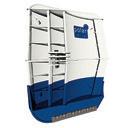
Tel: +33 (0) 2 99 56 14 36 trawldoor.morgere@morgere.fr www.morgere.com
Thyborøn & Poly-Ice Trawldoors for all kinds of pelagic, semi-pelagic and demersal trawling with single, twin- and multipurpose rigging. All doors are “Made in Denmark” according to customer demands and wishes.

8, Sydhalevej, DK-7680 Thyborøn, Denmark mail@thyboron-trawldoor.dk www.trawldoor.dk
Estrada de Fortons 23 36812 Redondela (Pontevedra) Spain
Tel: +34 986 20 33 12
E-mail: info@grupoeurored.com

Website: www.grupoeurored.com
Hi tech design and production of pelagic and bottom fishing trawl systems. Nets and deck material for tuna purse seiners, inshore fishing and longliners. Everything necessary for fishing activities:
MORGERE trawl doors, COTESI nets, ropes, mooring, BRIDON cable, flotation, CROSBY GROUP naval hardware, longline material, etc. Aquaculture integral supplies and installation of fish farming and Long Line production systems, OFFSHORE facilities.
Eurored Directory.indd 1 30/09/2020 14:32 -we make fishing more profitable

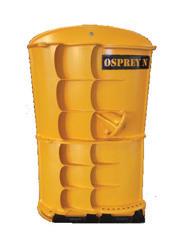

AKVASERVIS TRAWLS
Email: office@akvaservis.lt www.akvaservis-trawl.com

Tel: +370 46 365 363
Las Palmas - Baltic - Murmansk
Designer & manufacturer of Pelagic, Semi-Pelagic & Bottom trawls since 1992 with active trawls in North Atlantic, Far-Eastern & Western-African fisheries.

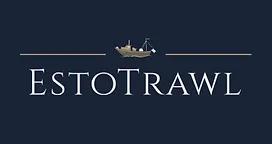
P.O. Box 19
P.O. Box 19 FO-530 Fuglafjørõur Faroe Islands
FO-530 Fuglafjørður Faroe Islands
Tel: +298 474 200
Tel: +298 474 200
Fax: +298 474 201
Fax: +298 474 201
Email: info@vonin.com
E-mail: info@vonin.com
Web: www.vonin.com
Web: www.vonin.com
Contact: Bogi Non
Contact: Eystein Elttør
Vónin is a major supplier to the fishing fleet and aquaculture industry with branches in the Faroe Islands, Greenland, Canada, Denmark and Norway. Vónin manufactures pelagic trawls, semi pelagic trawl, shrimp trawls, bottom trawls, sorting grids, crab pots, net cages, mooring systems and net washing systems.
Manufacturer of pelagic trawls, semi-pelagic trawls, shrimp trawls, various bottom trawls, purse seine nets, fish farming nets and sorting grids. Vónin is a major supplier to the North Atlantic/Arctic fishing fleet. We have all accessories in stock.
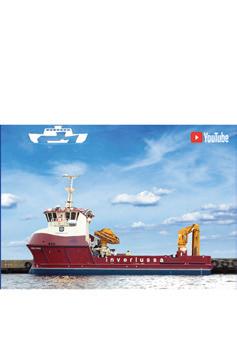
For more information visit: seawork.com contact: +44 1329 825 335 or email: info@seawork.com
#Seawork
Seawork celebrates its 25th anniversary in 2024!
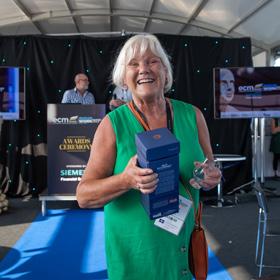
The 25th edition of Europe’s largest commercial marine and workboat exhibition, is a proven platform to build business networks.
Seawork delivers an international audience of visitors supported by our trusted partners.
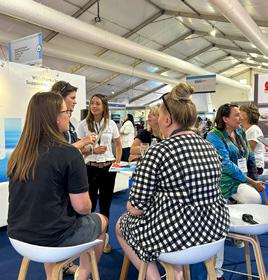
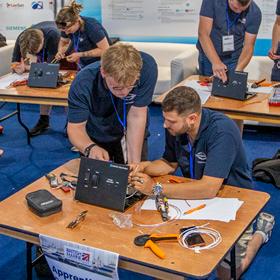
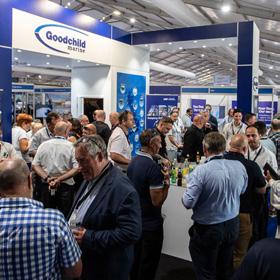
Seawork is the meeting place for the commercial marine and workboat sector.

12,000m2 of undercover halls feature 400 exhibitors with over 70 vessels, floating plant and equipment on the quayside and pontoons.
Speed@Seawork on Monday 10 June in Cowes offers a sector specific event for fast vessels operating at high speed for security interventions and Search & Rescue.

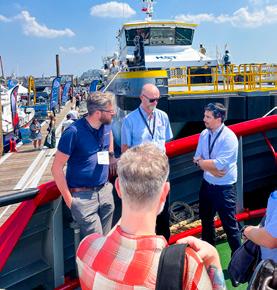

The European Commercial Marine Awards (ECMAs) ceremony celebrates individuals and innovative companies on Tuesday 11 June.
The Conference programme, chaired by industry experts, helps visitors to keep up to date with the latest challenges and emerging opportunities.
Media partner
The Careers & Training Day on Thursday 13 June 2024 delivers a programme focused on careers in the commercial marine industry.
